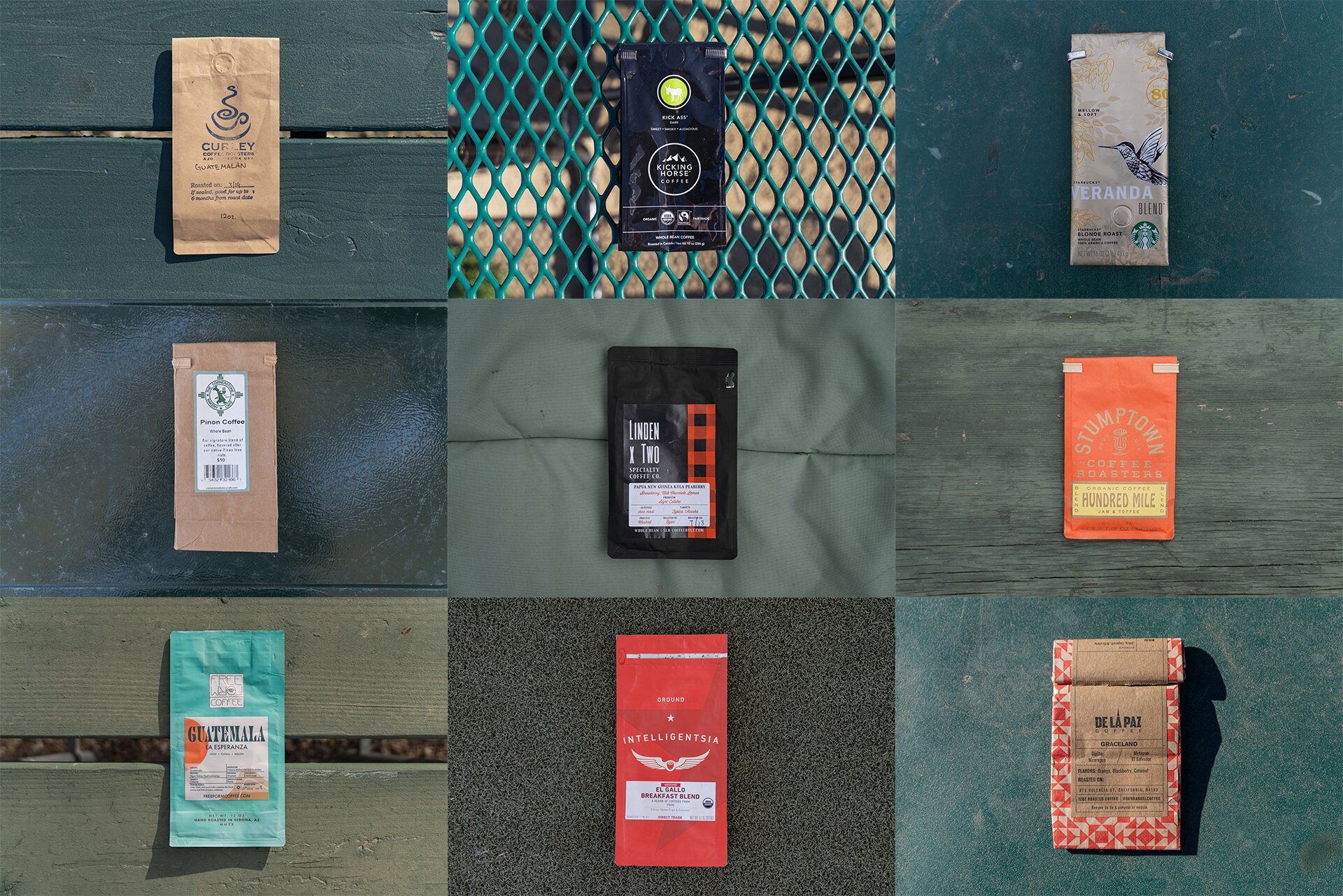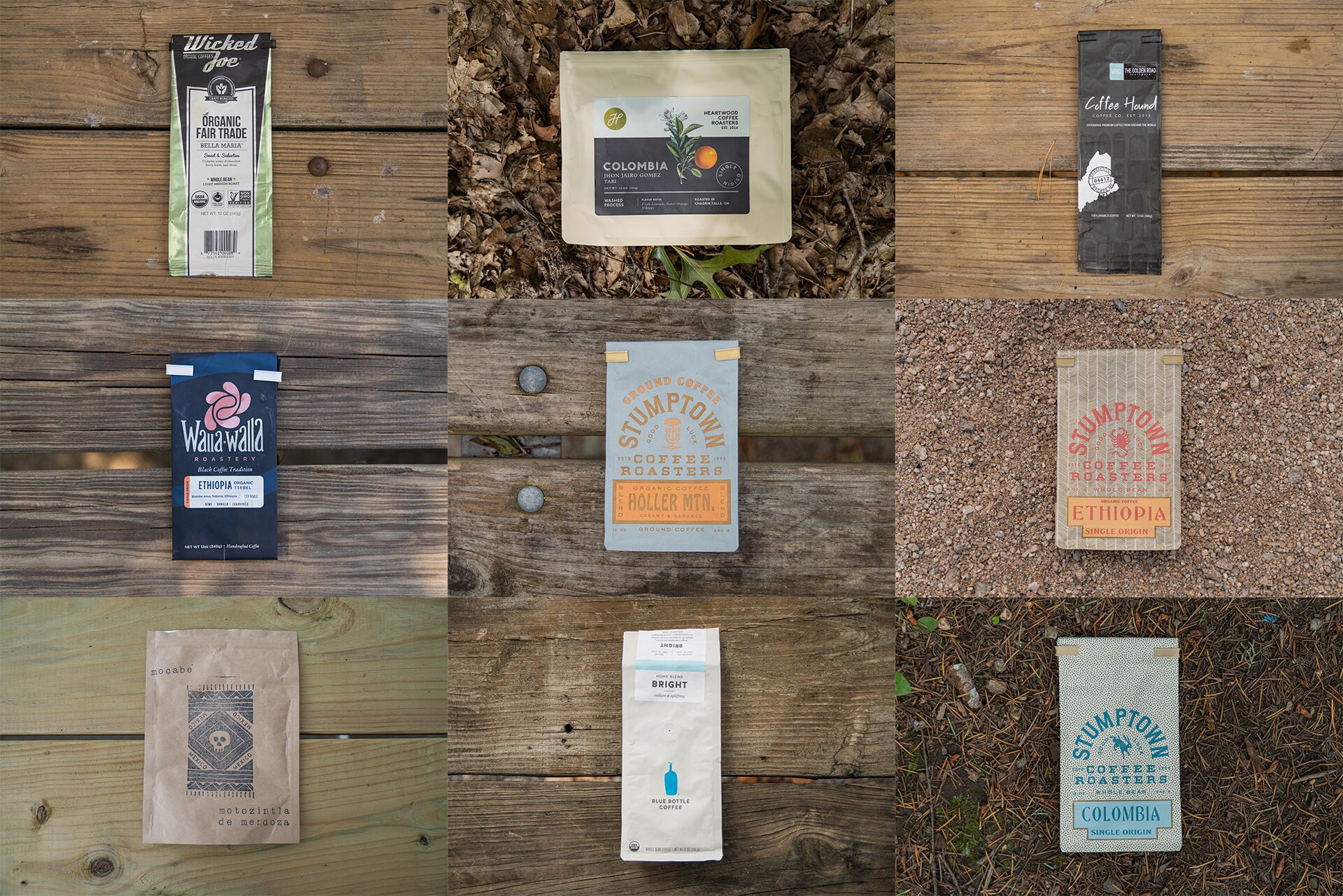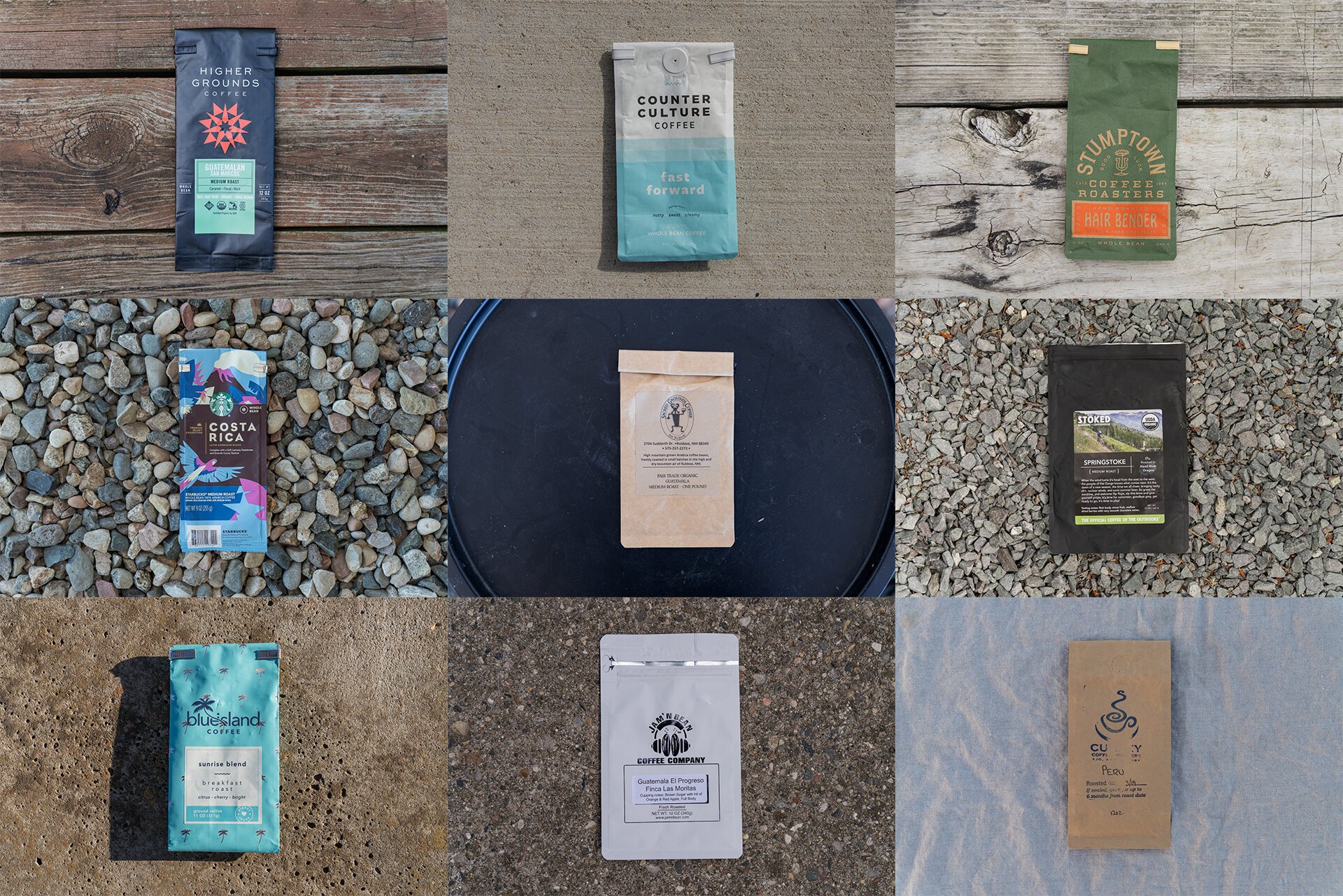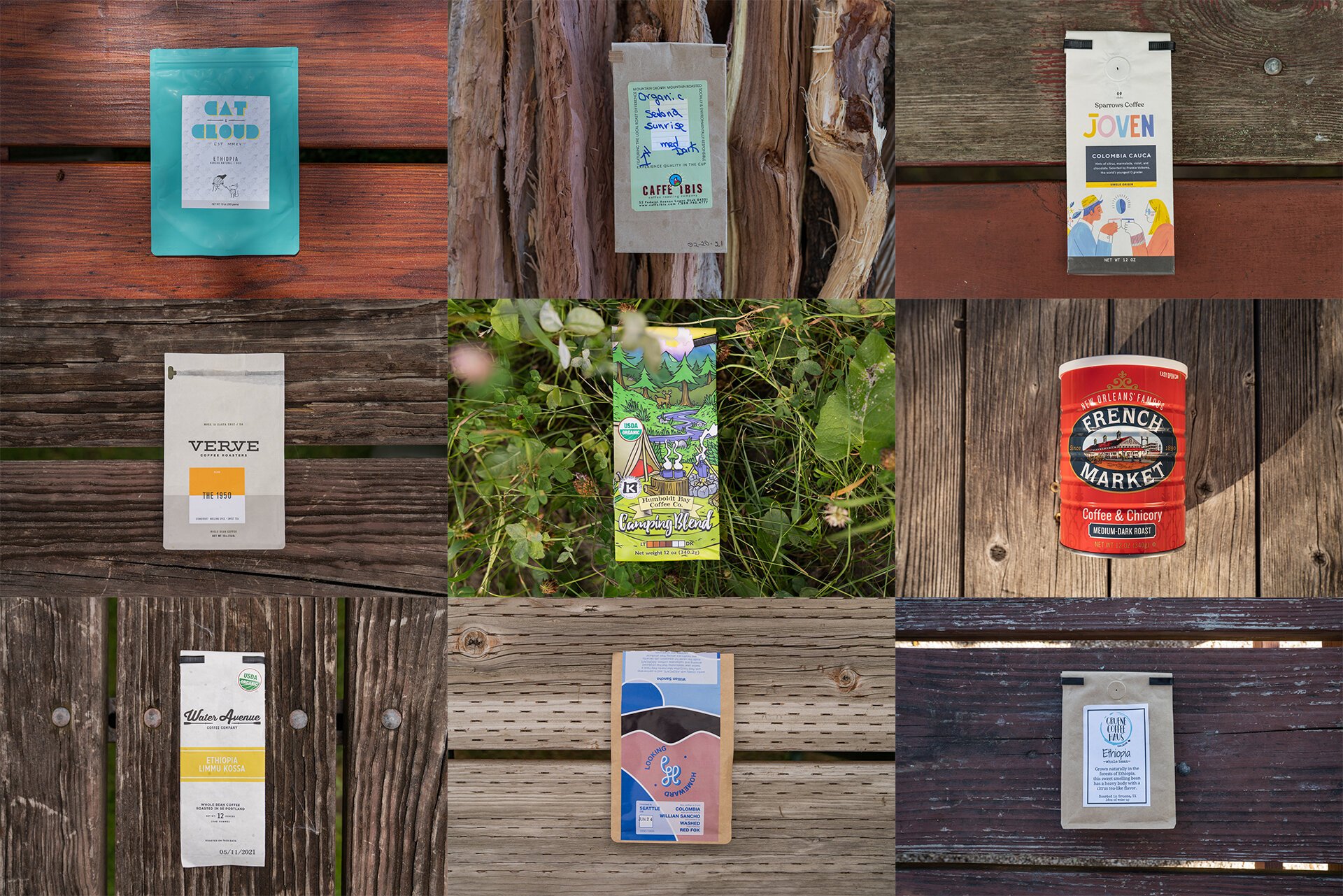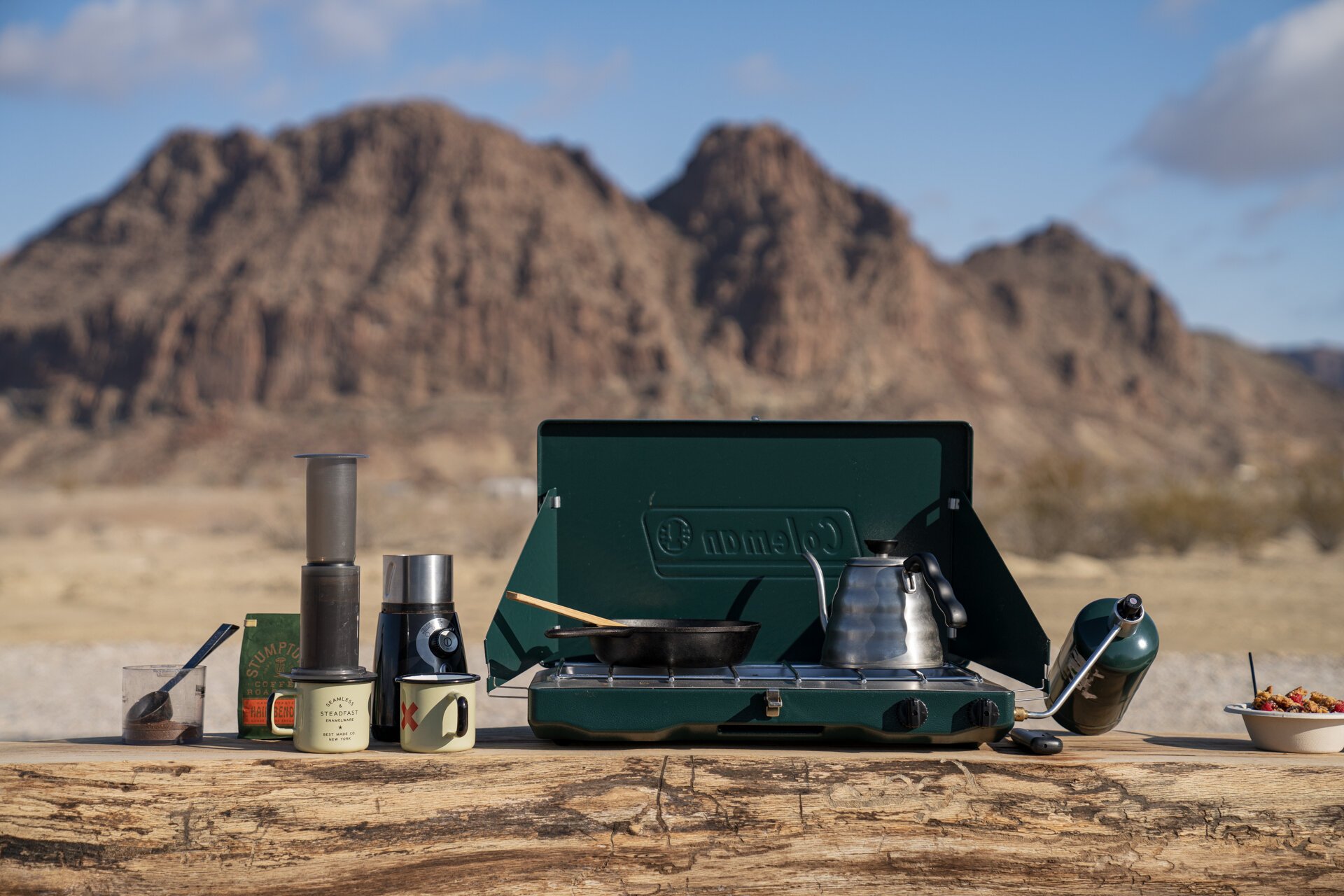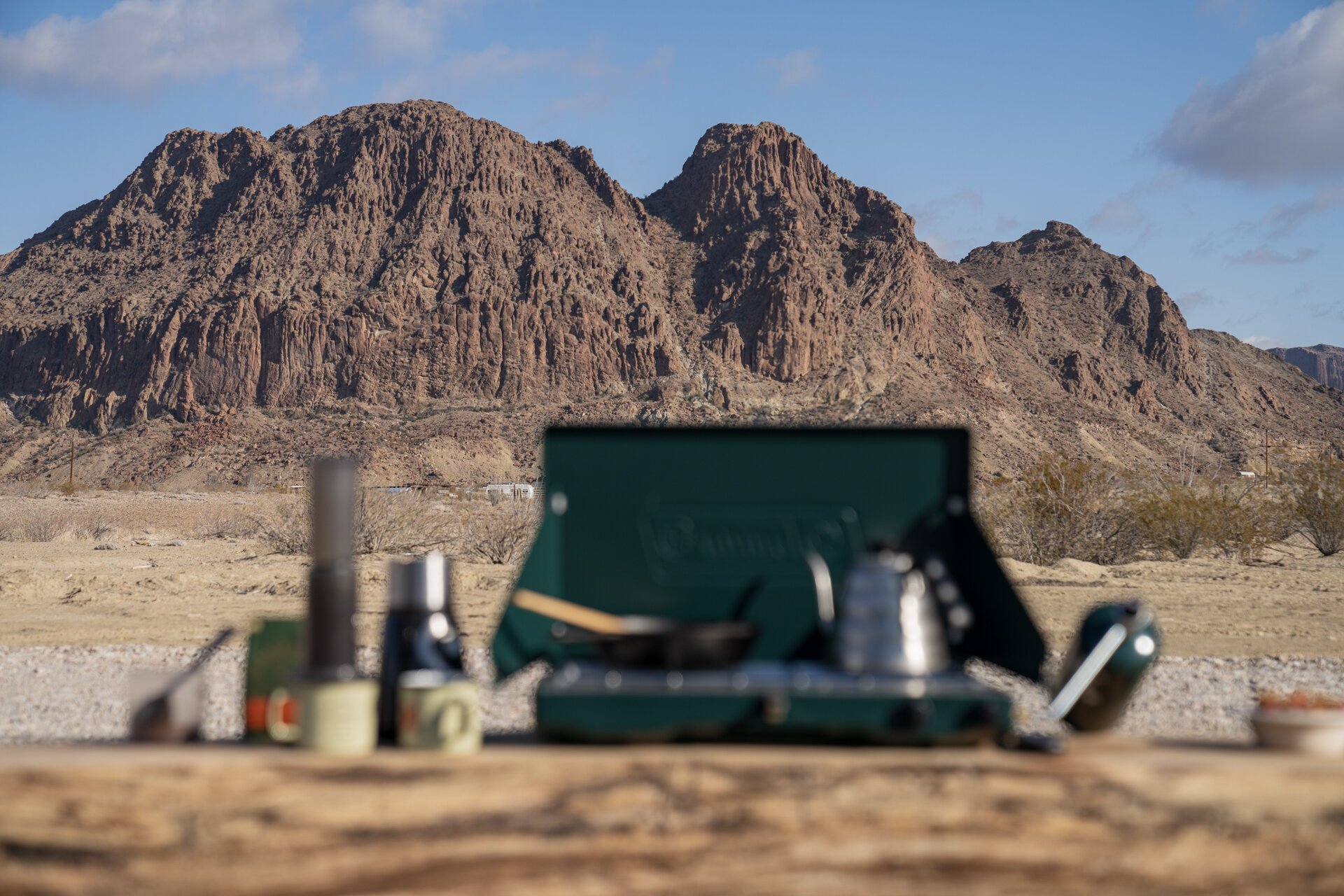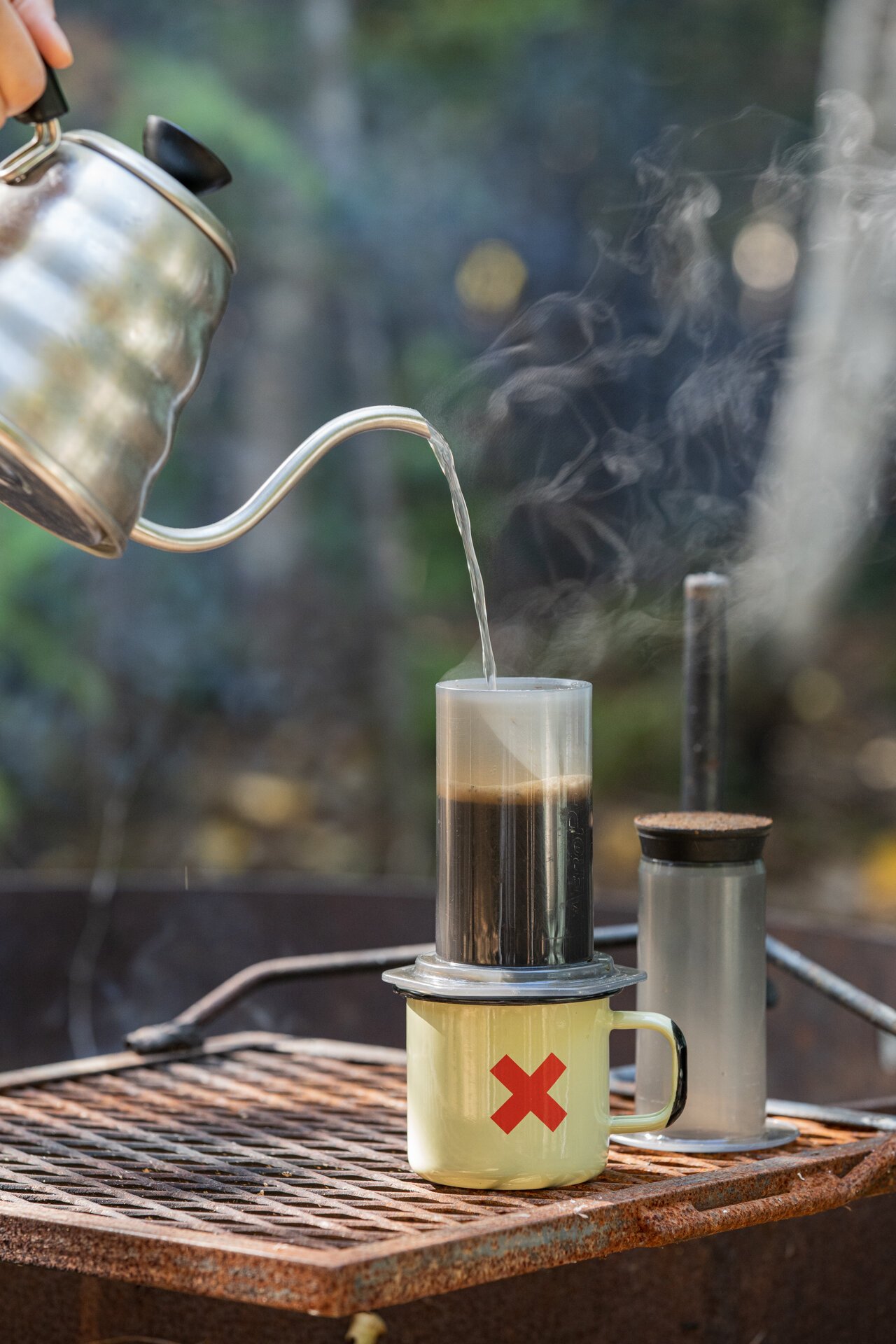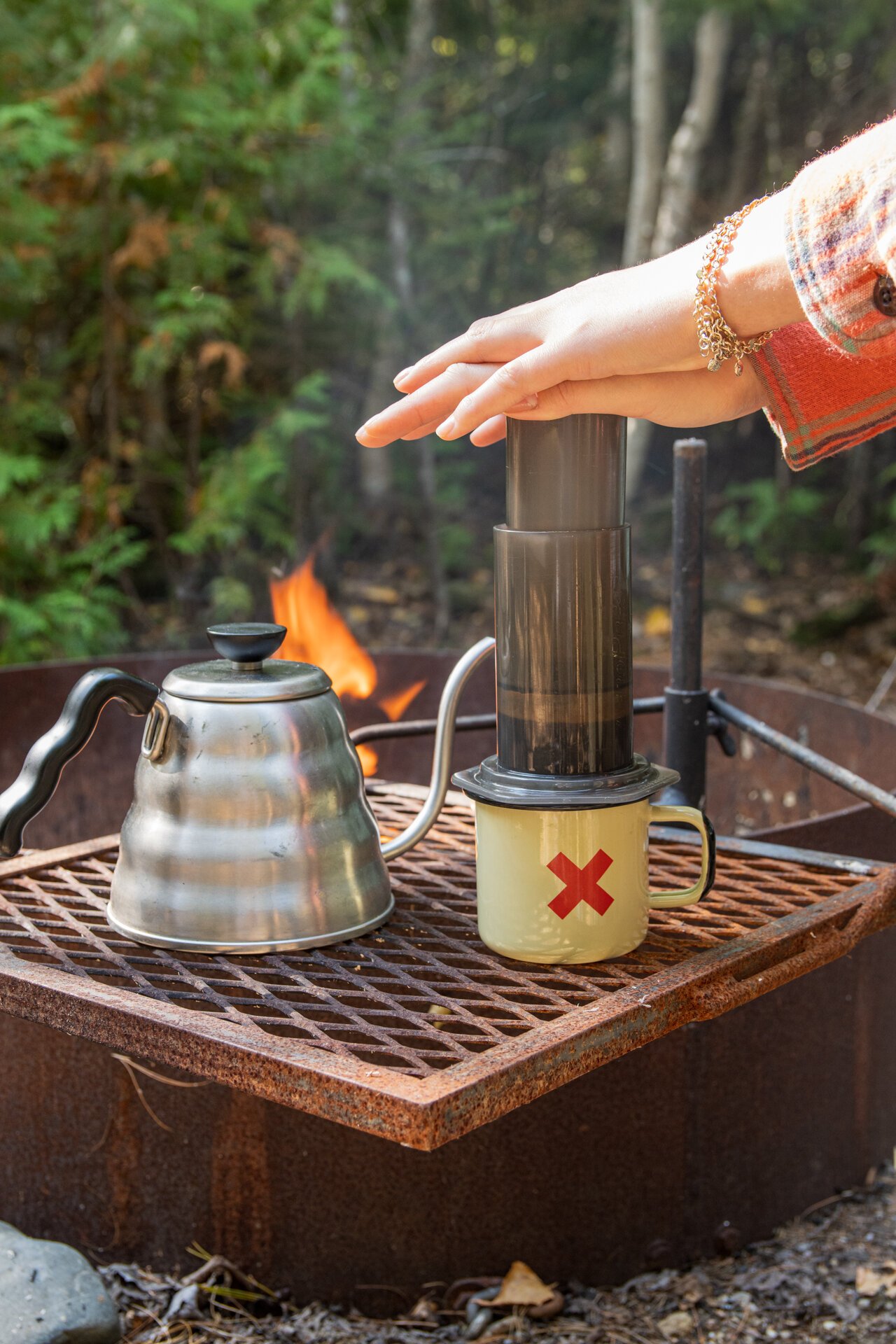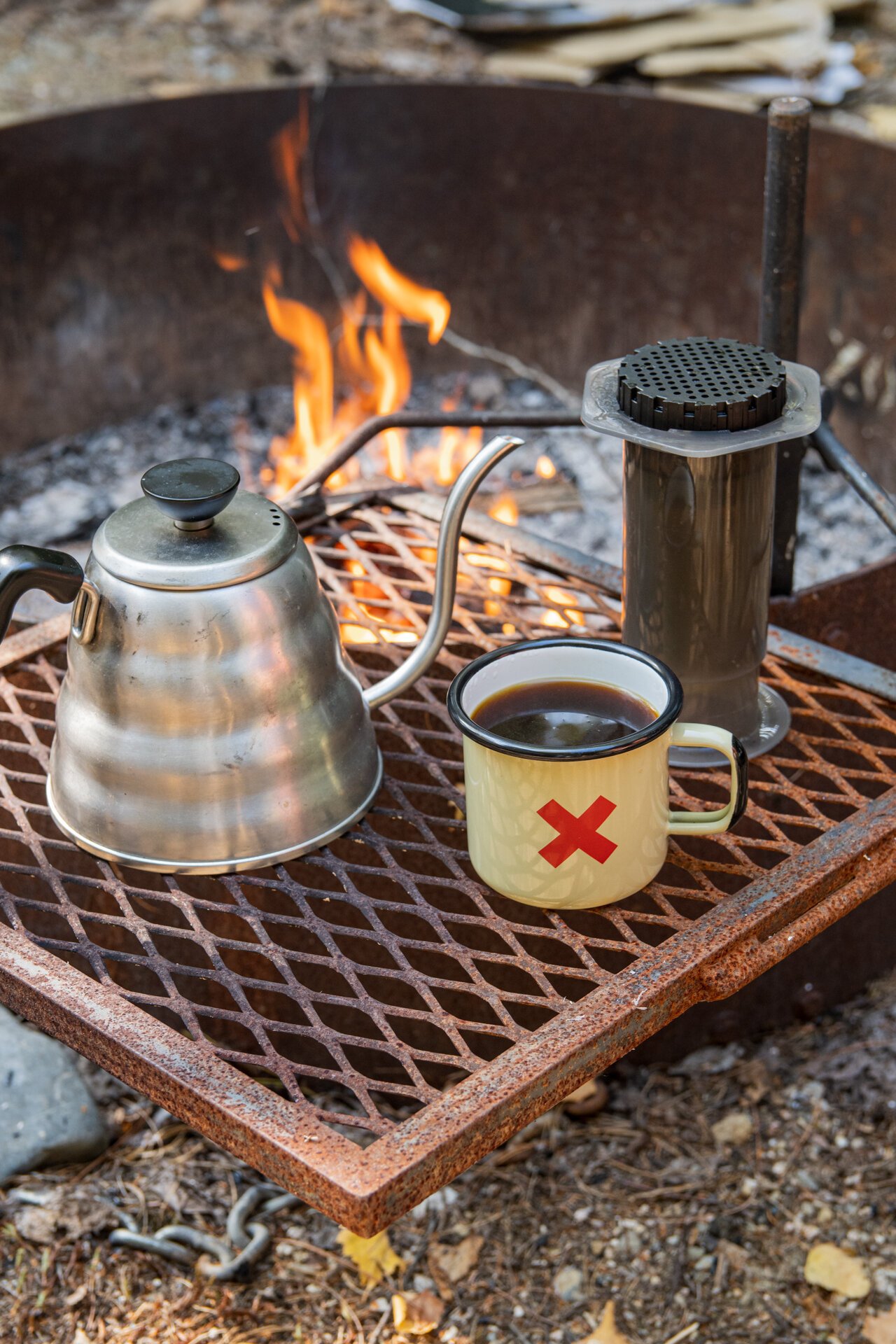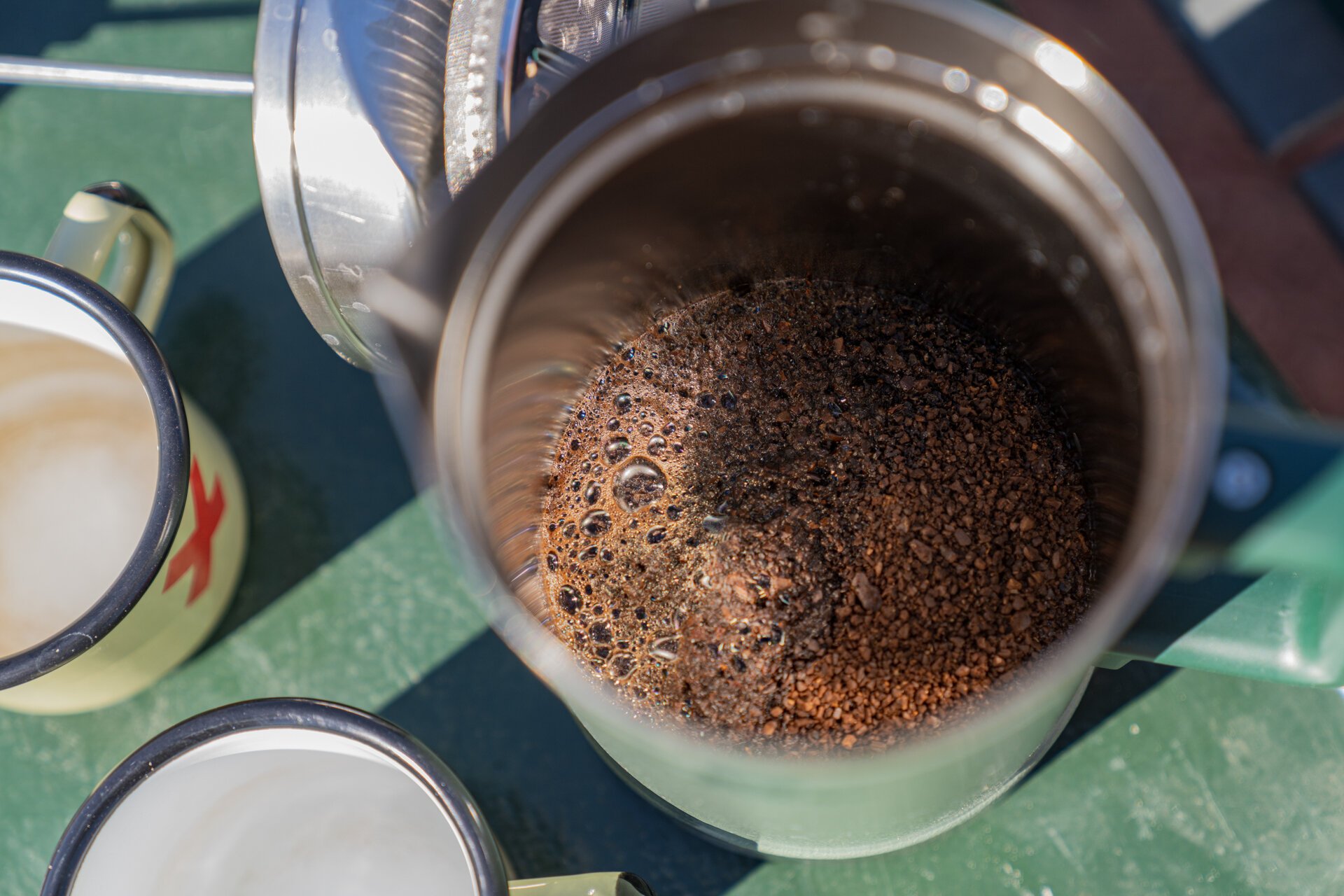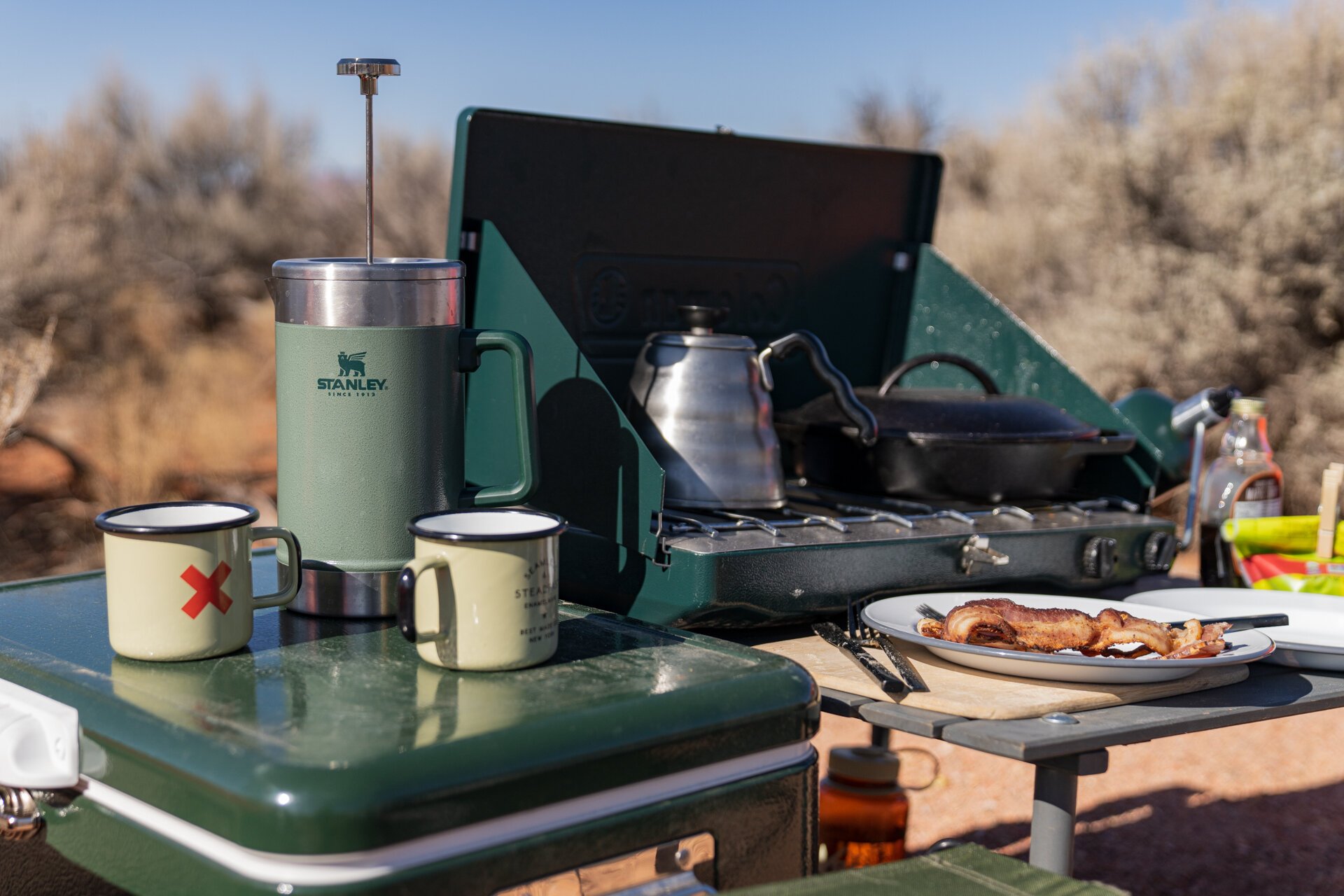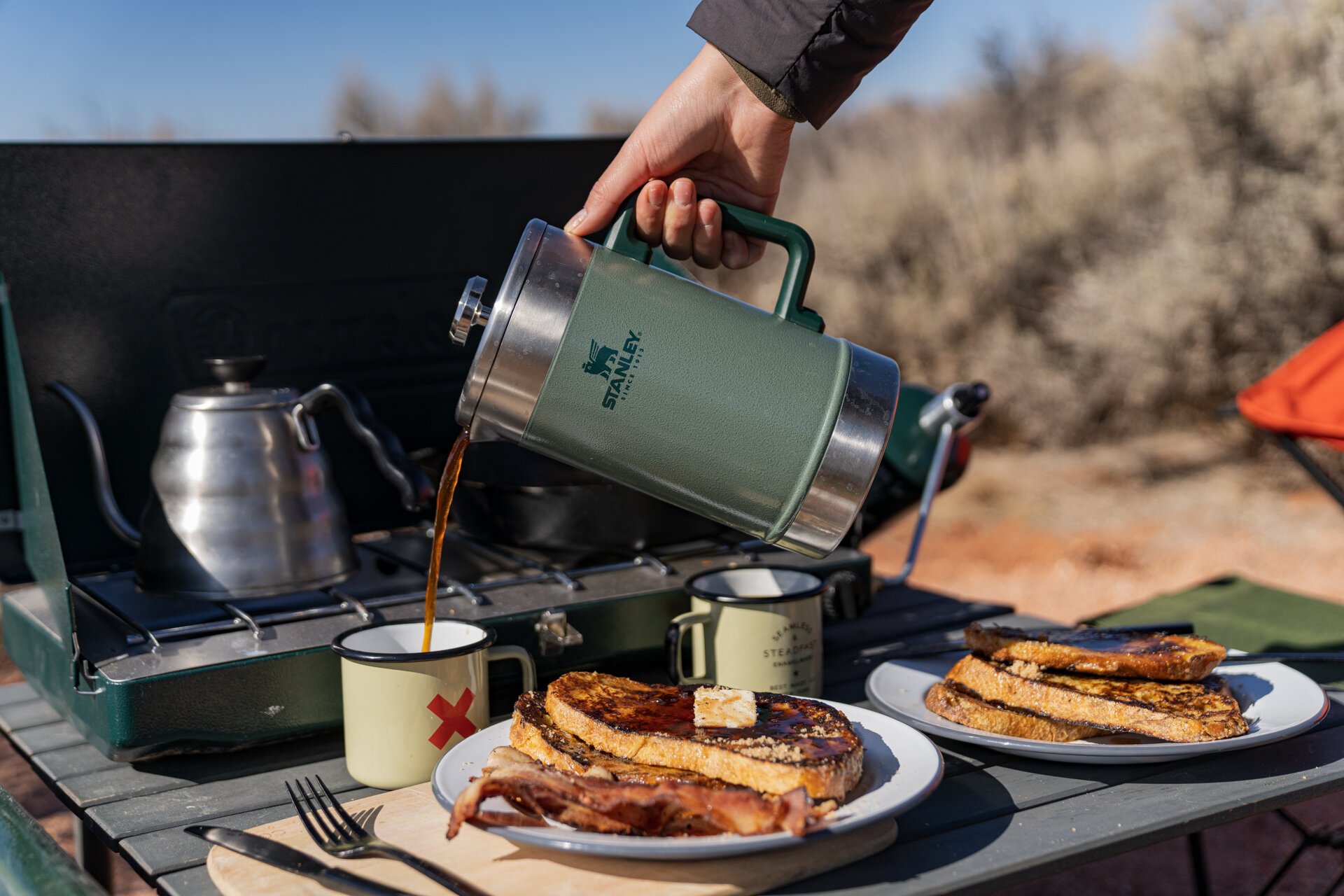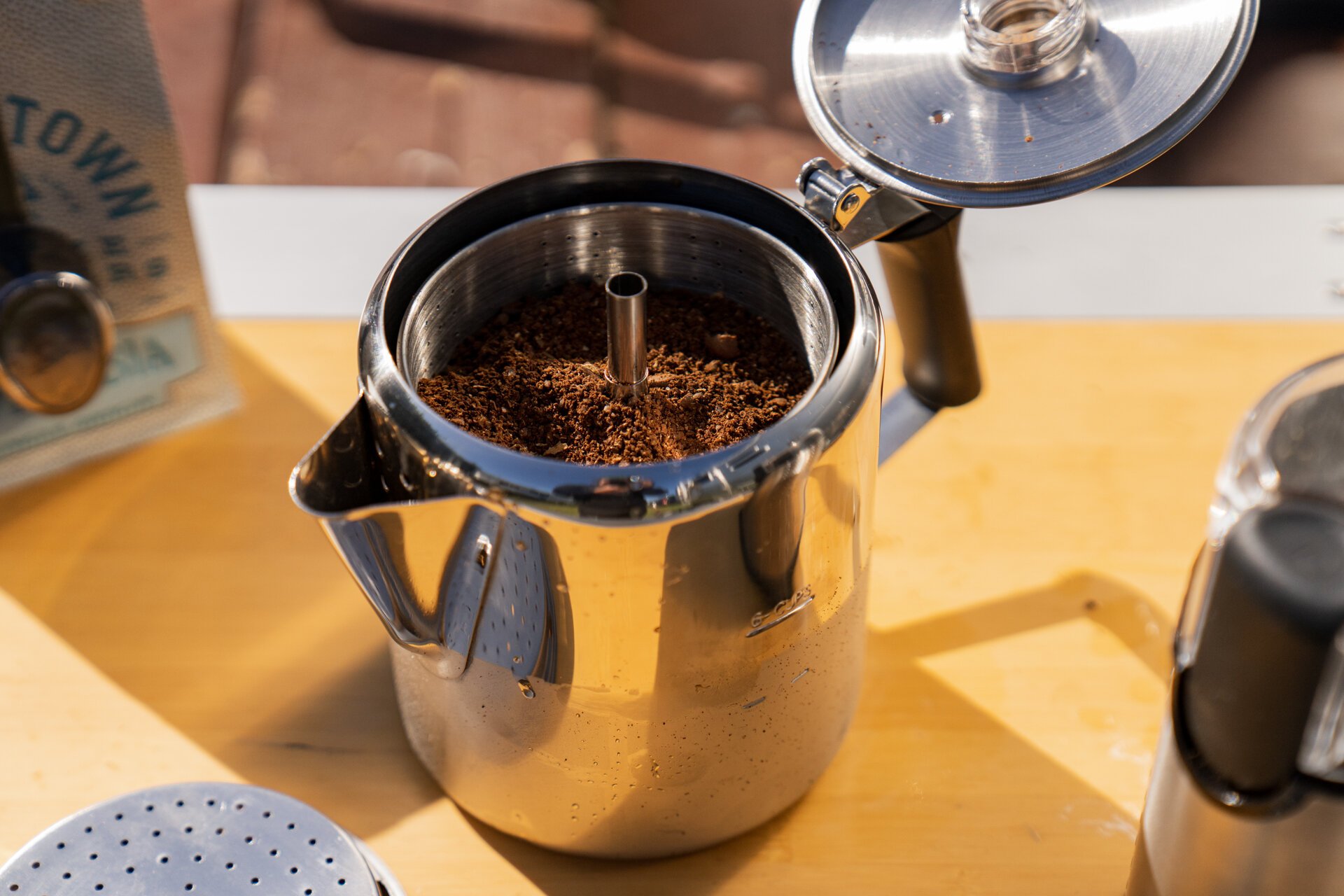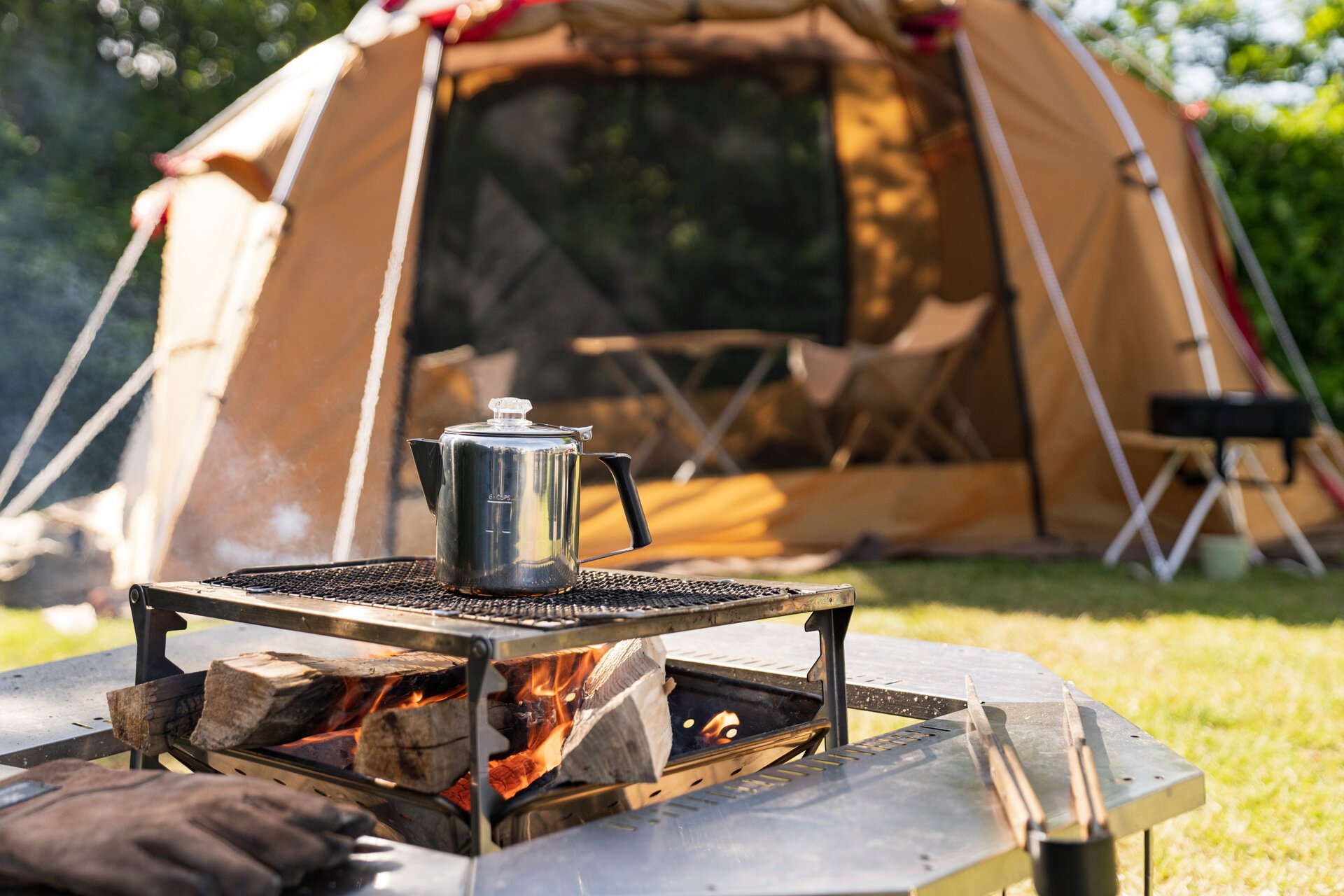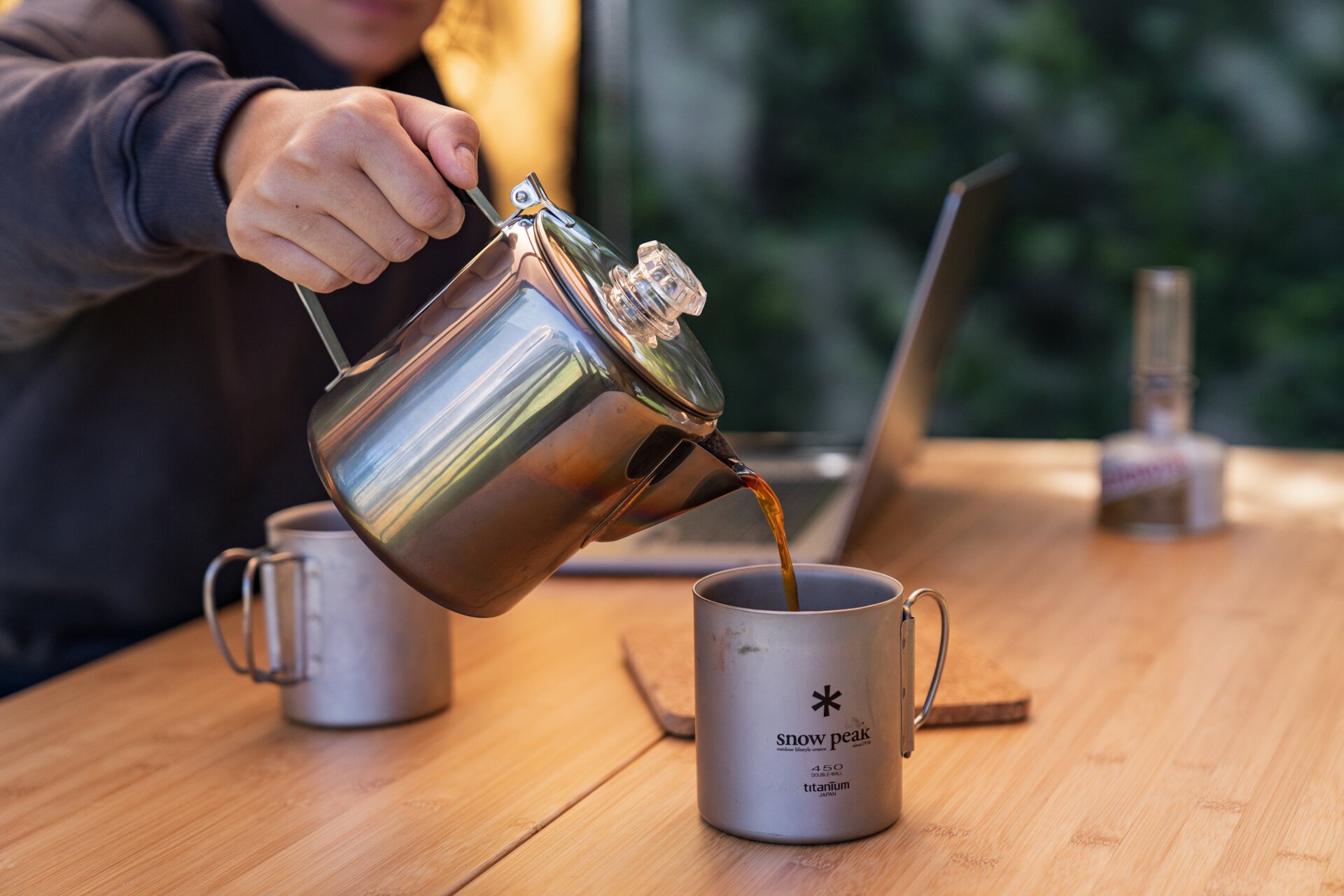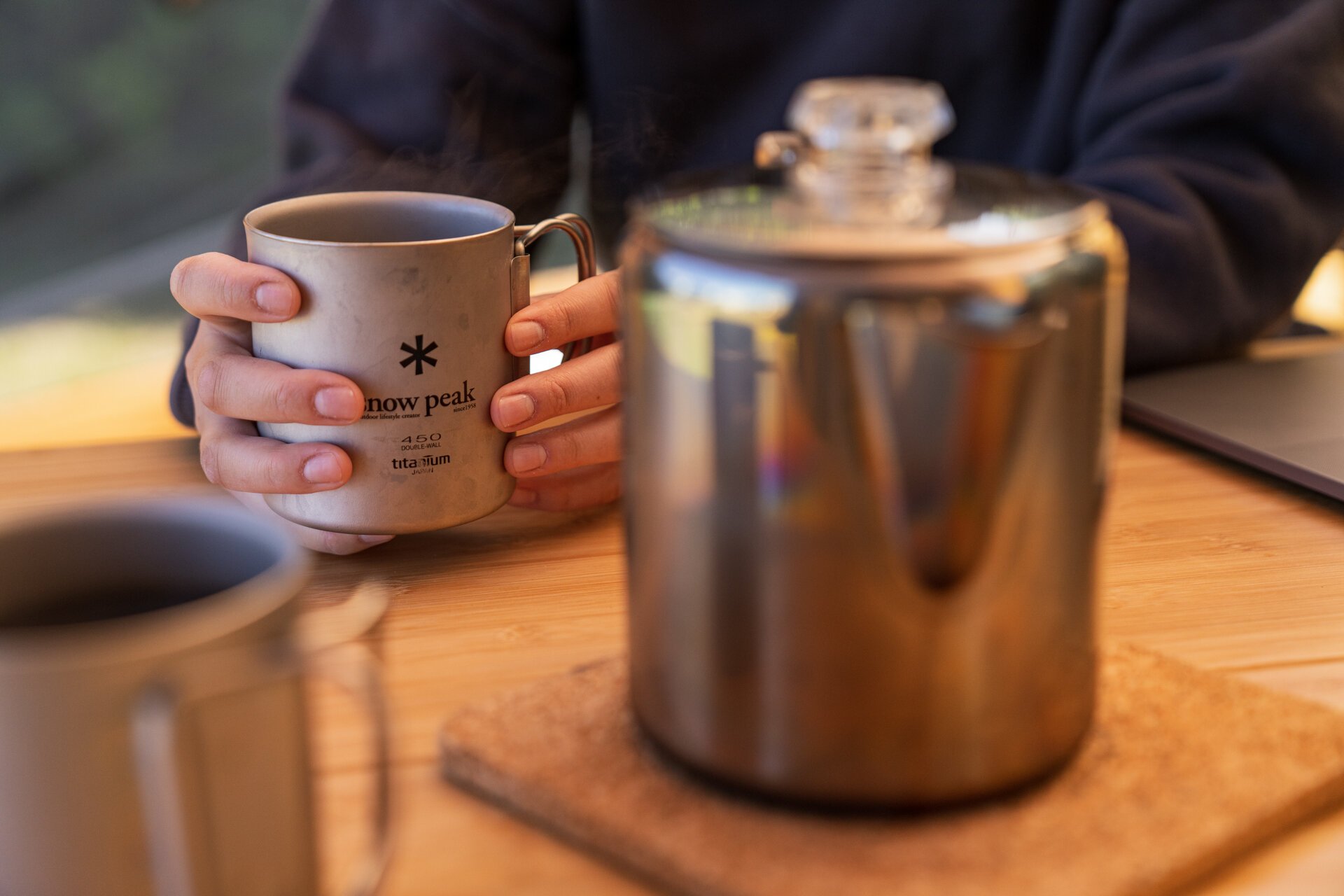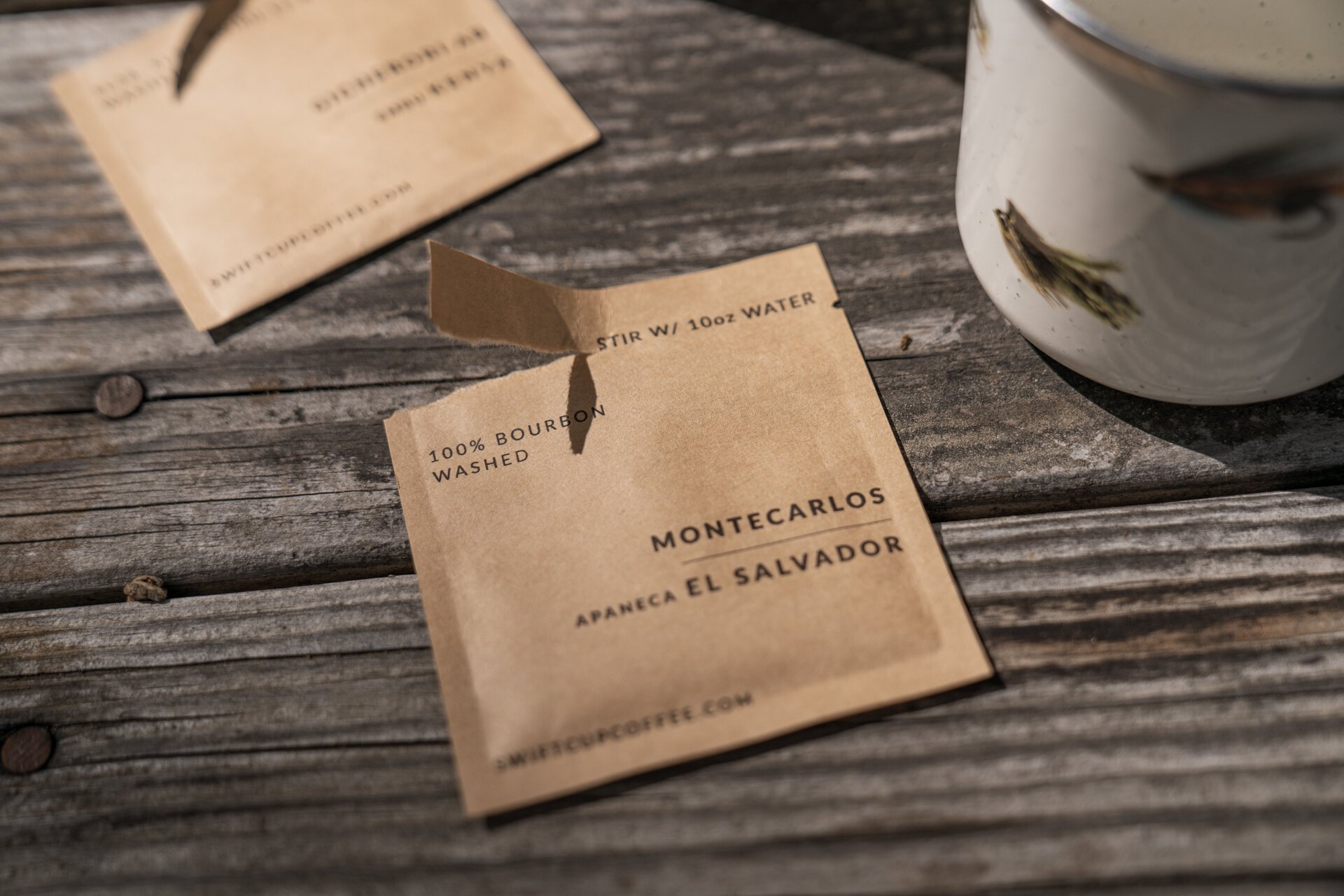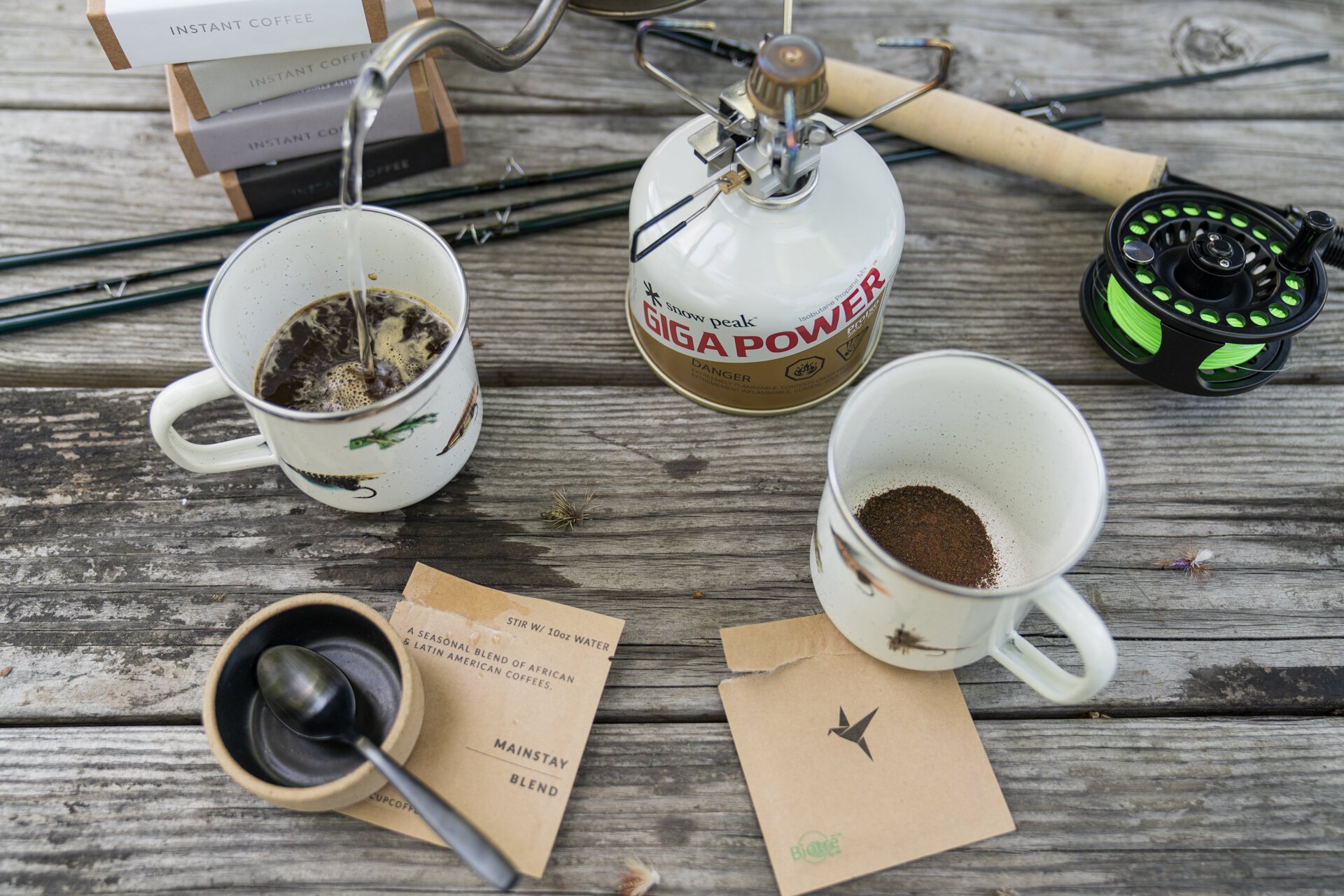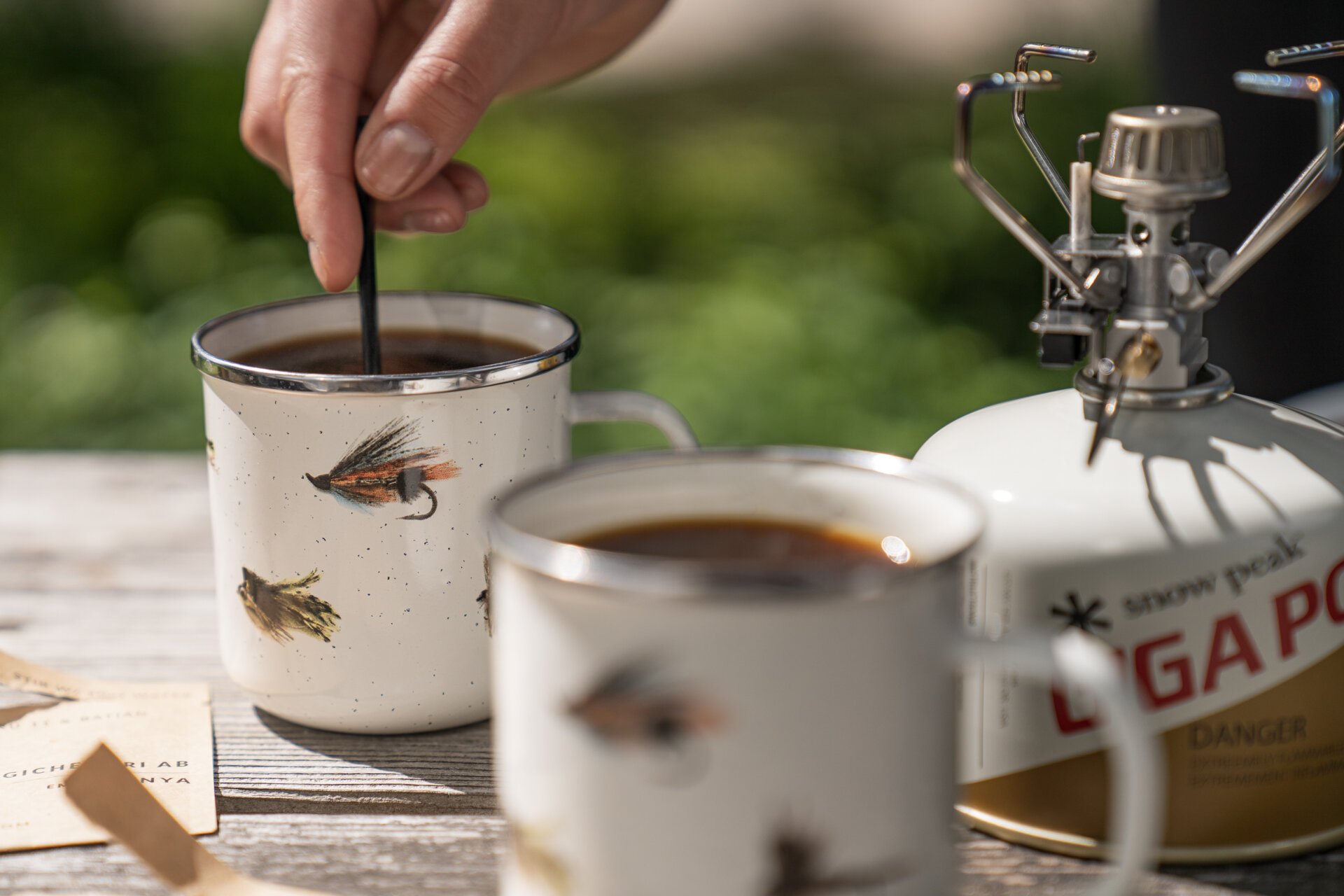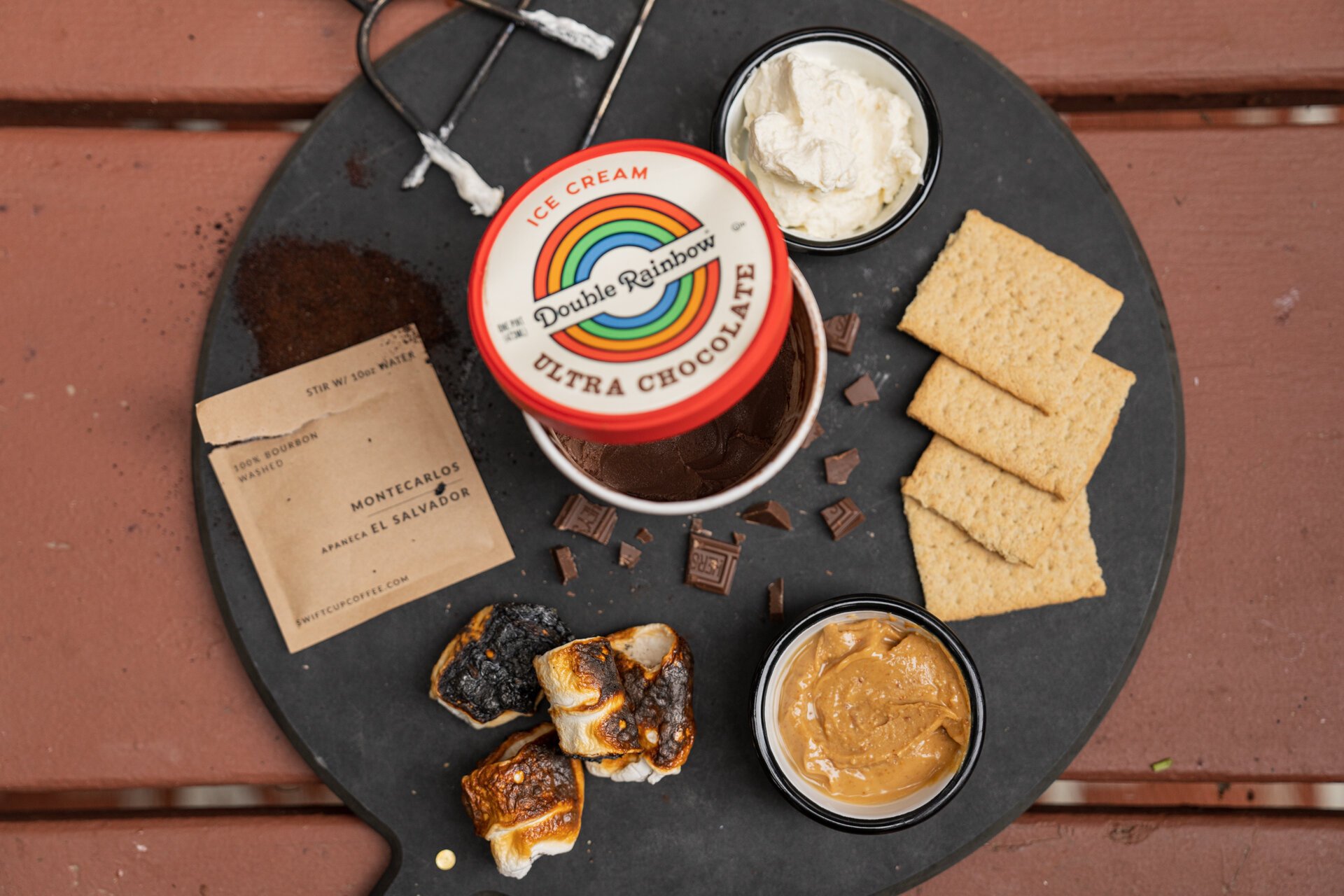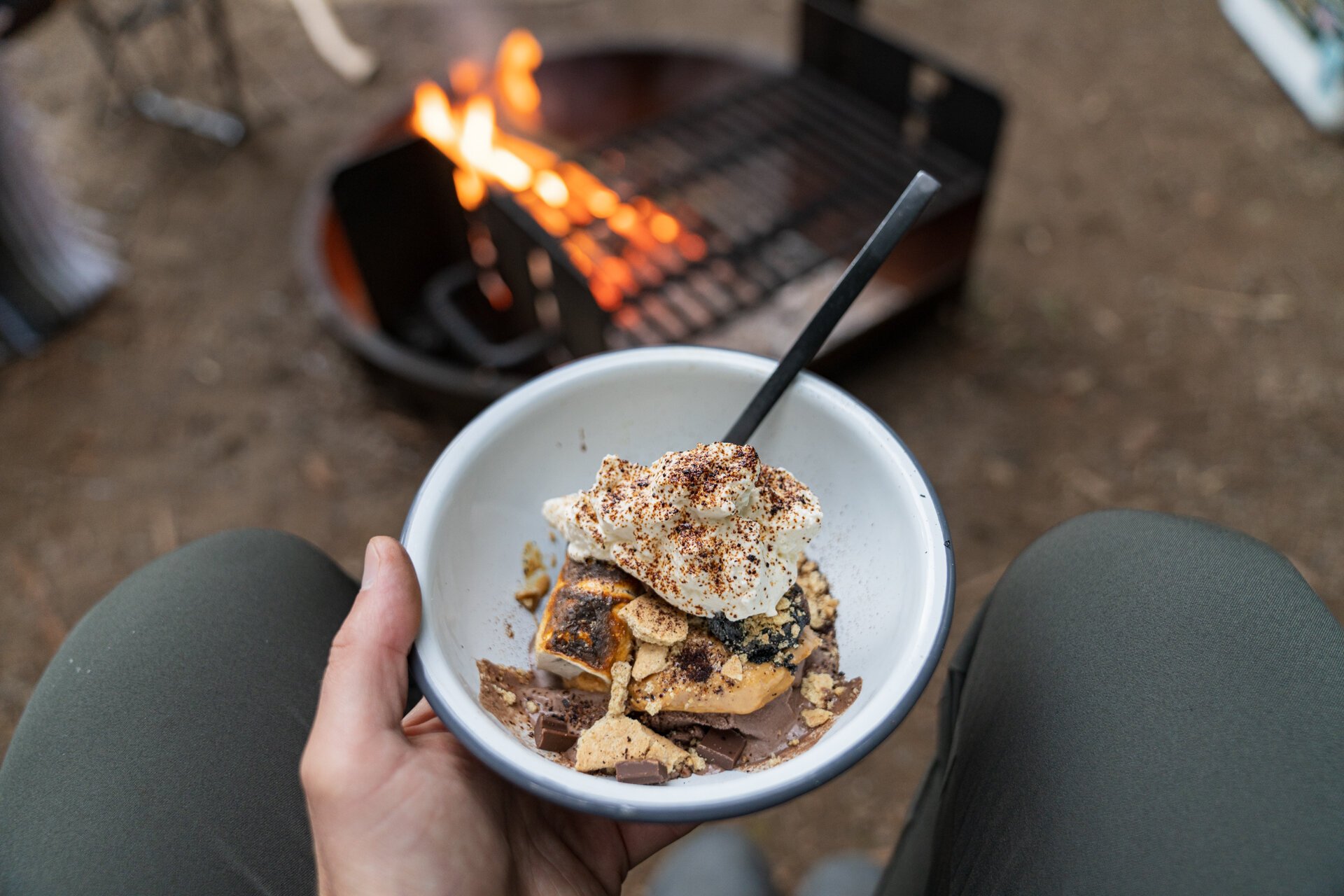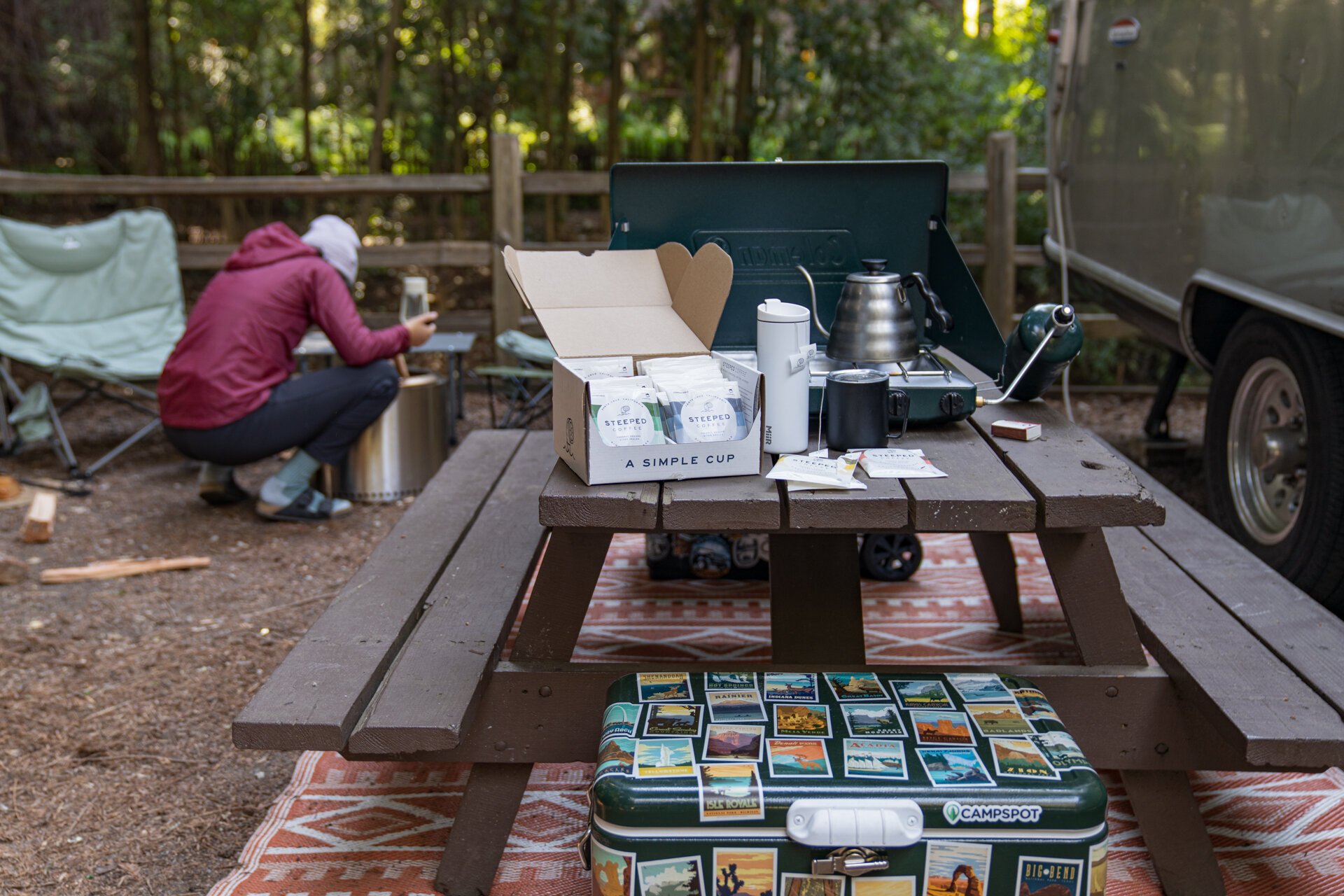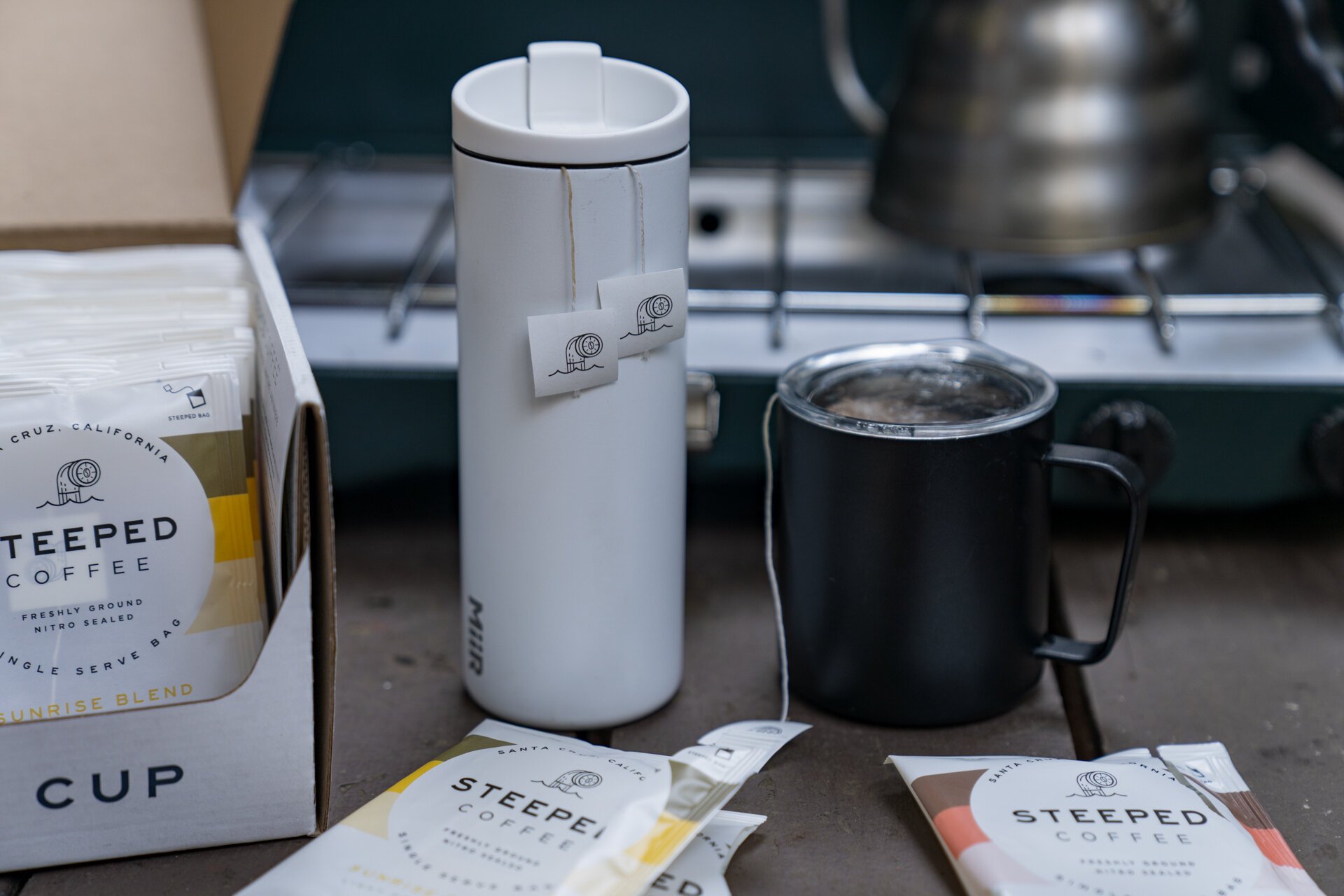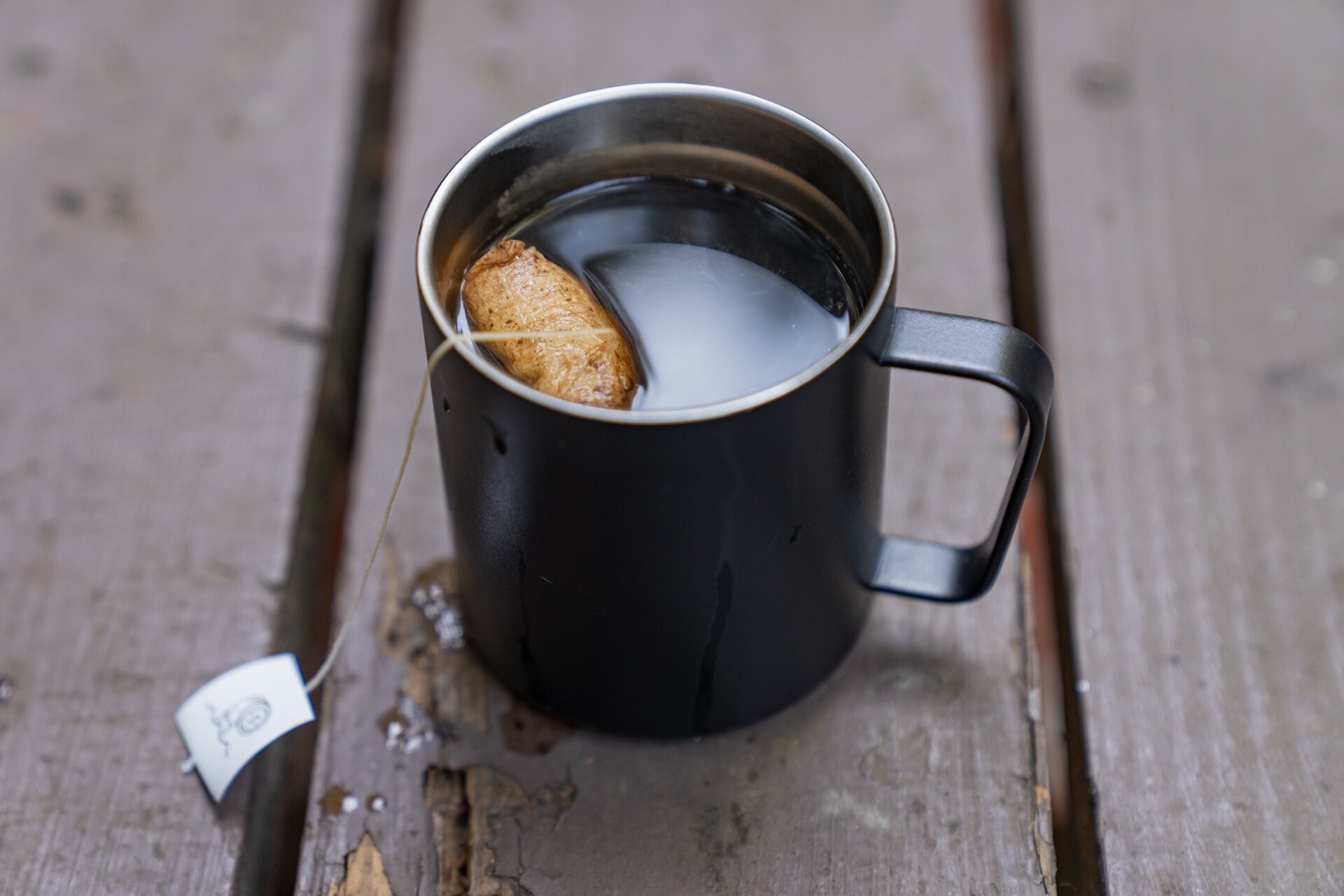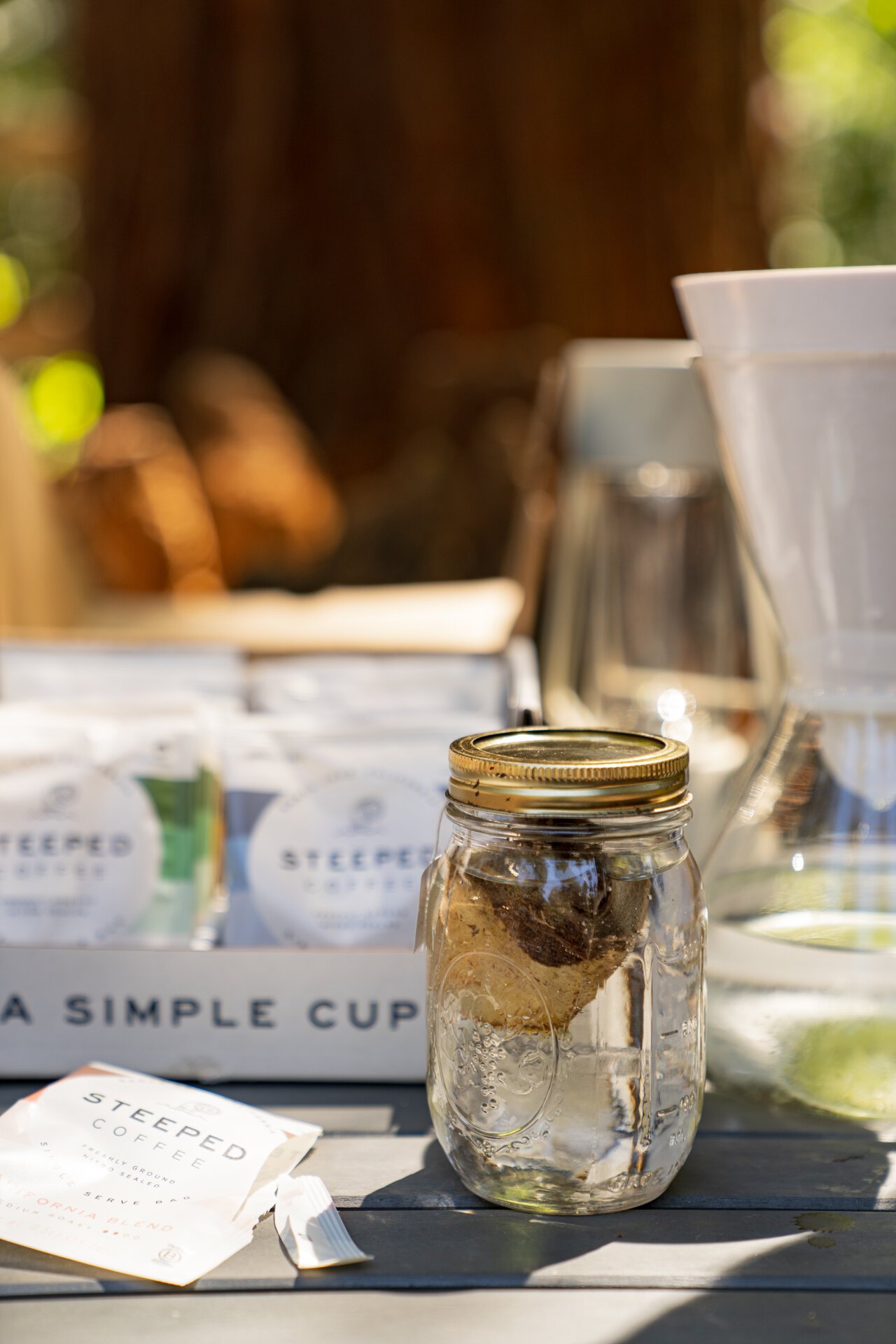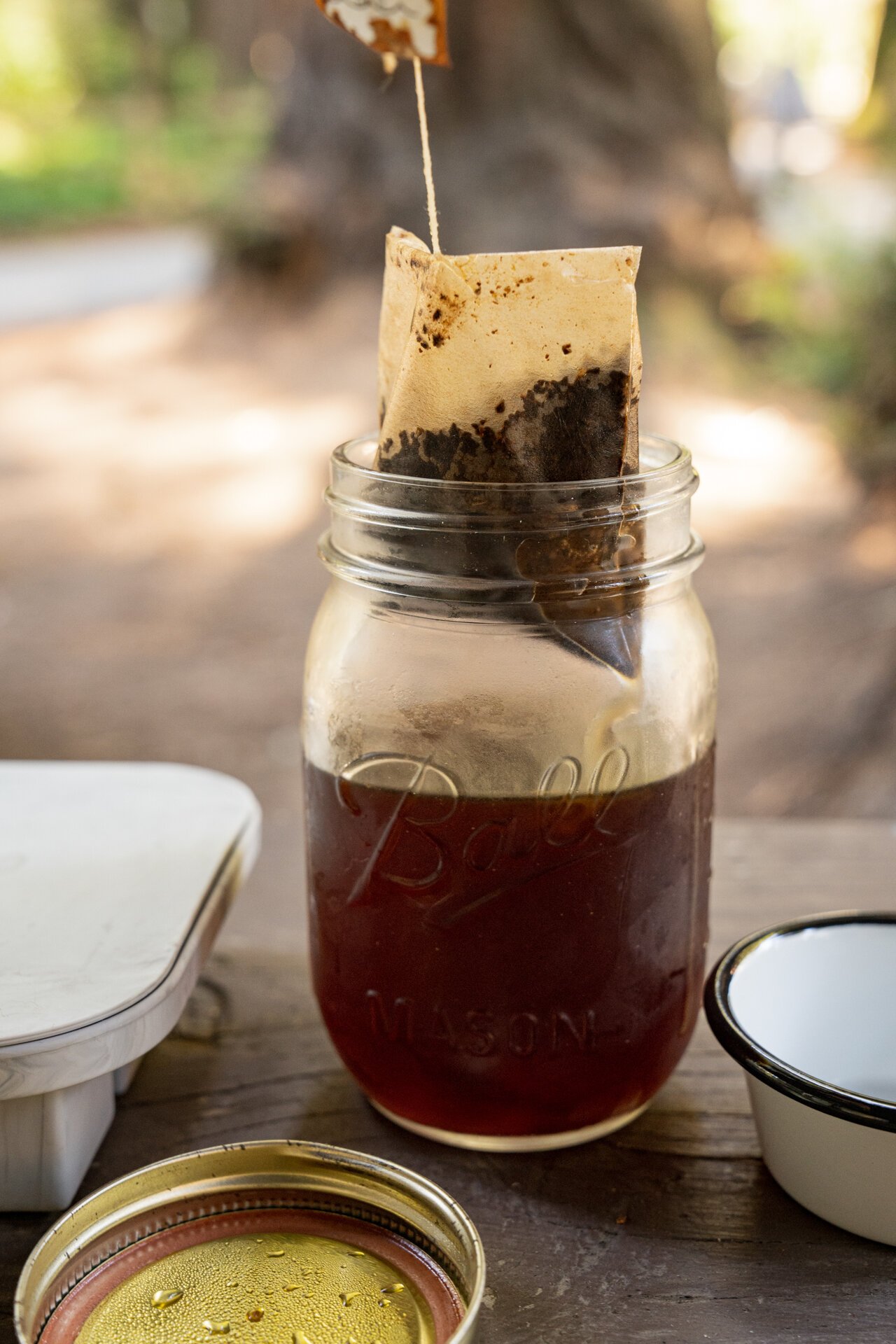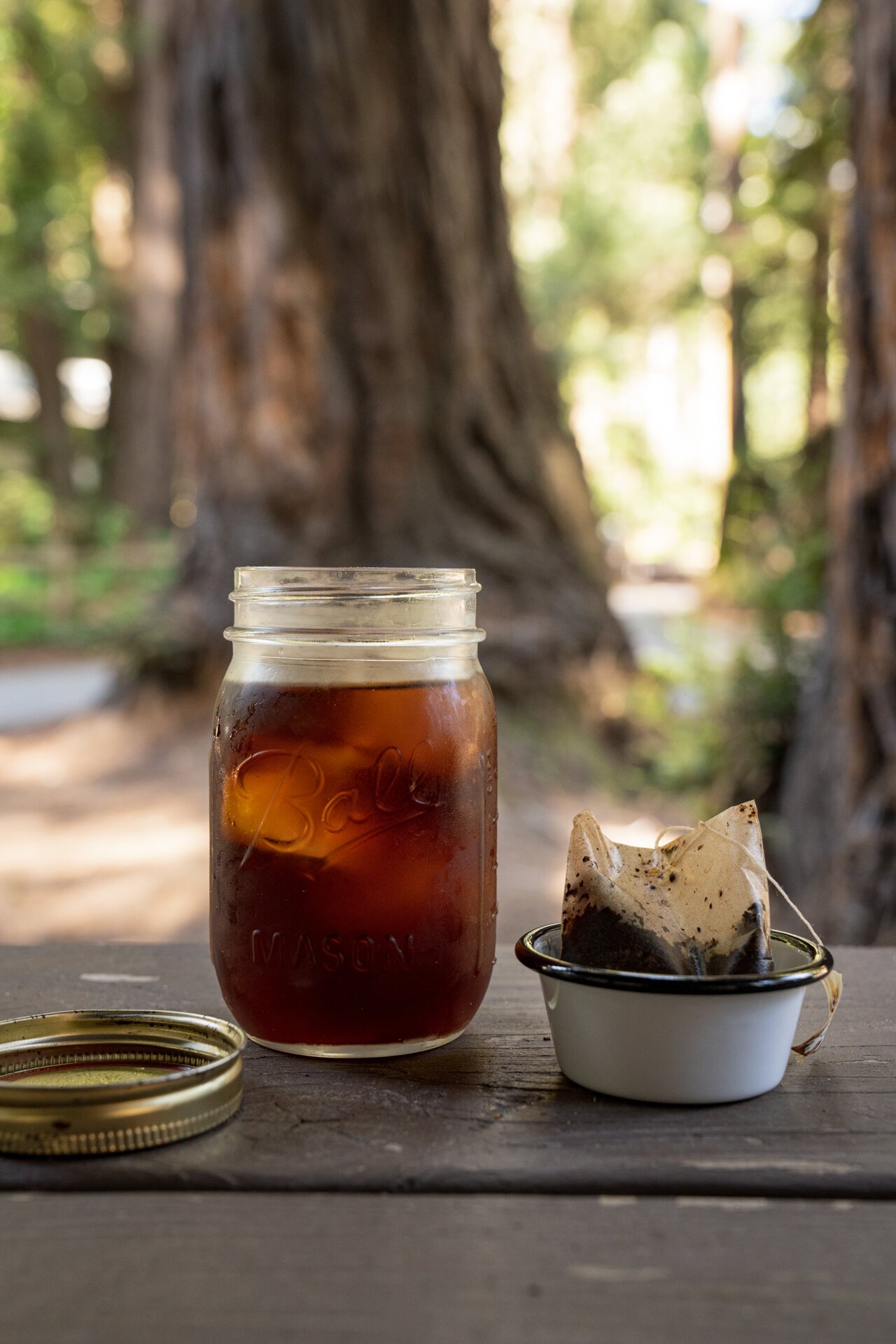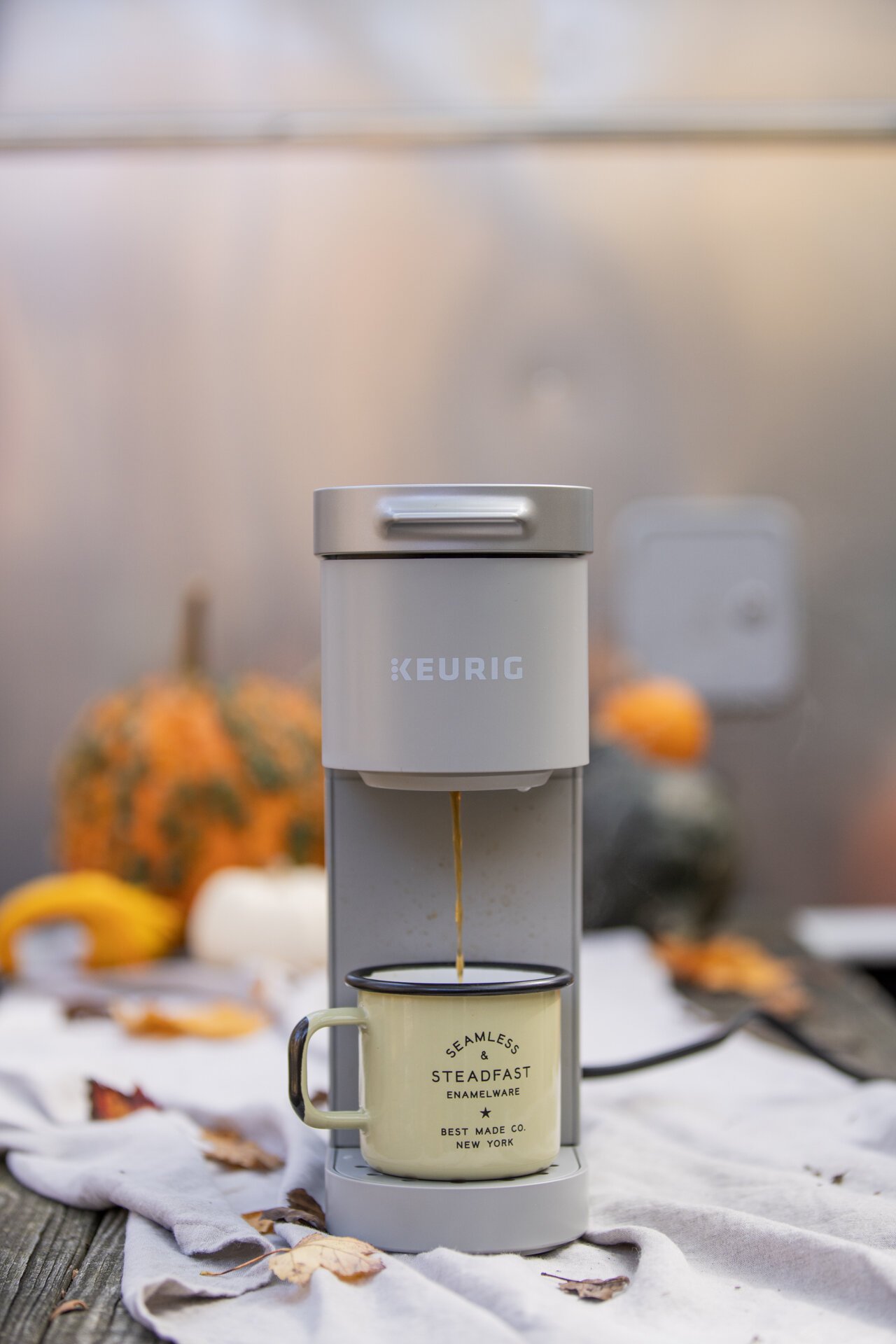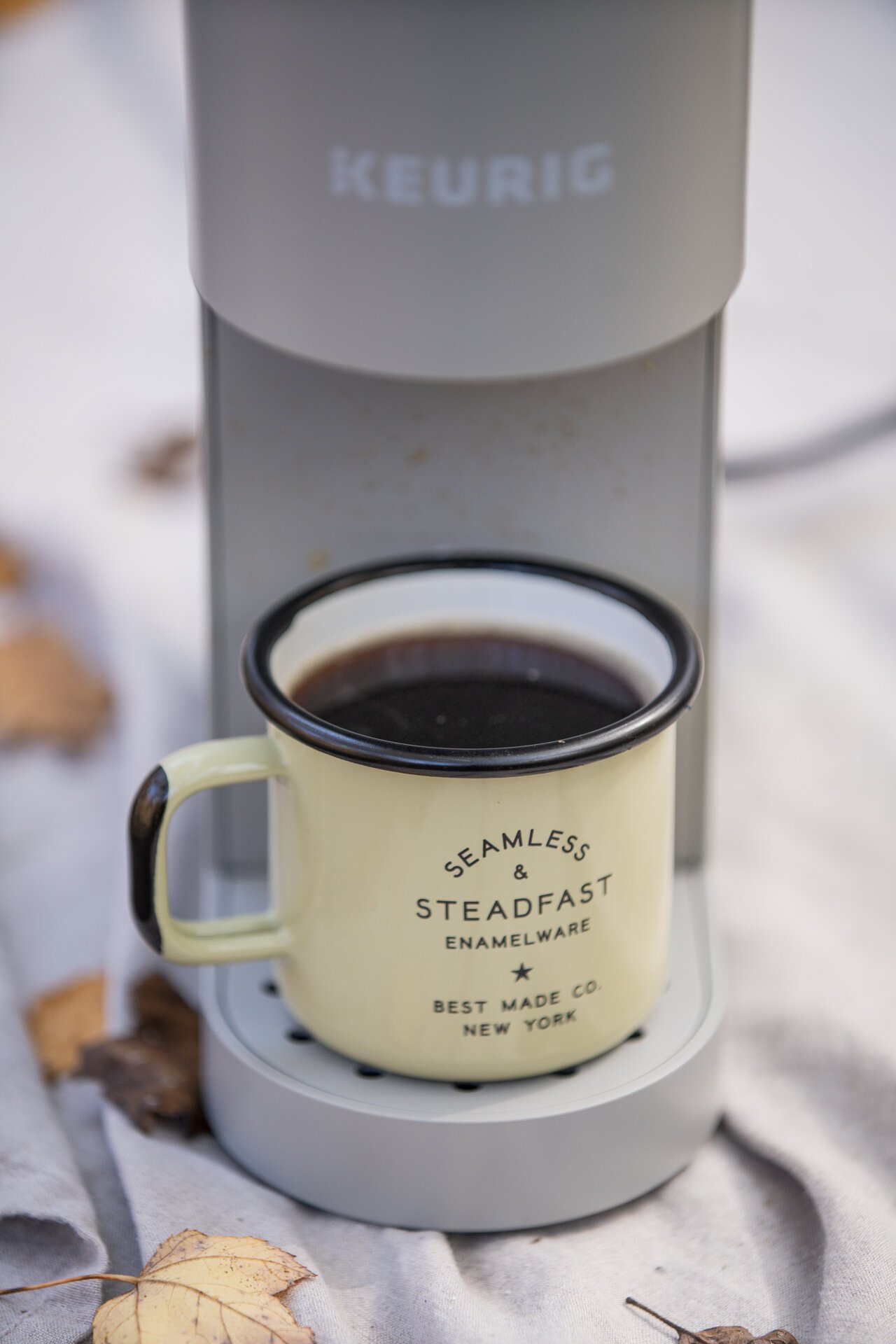Coffee While Camping
One of the greatest benefits of getting outside and camping is the relief it provides from our daily routines. Getting away from the day-to-day is one of the biggest reasons why many of us get out and unplug.
But, that doesn't mean you should leave your coffee behind. Quite the contrary, my friend.
While traveling the country on the Find Your Campspot tour, I've enjoyed the opportunity to try dozens of coffees from roasteries and coffee shops along our route. Not only does doing so support local businesses, but it also injects some variety into your daily cup.
My first tip for a great cup of coffee is: BUY GOOD COFFEE.
GRIND YOUR BEANS
I can understand how easy pre-ground coffee makes life, but a great loss of flavor comes with that added convenience. Take your beans in your own hands and opt for a bag of whole bean coffee and pack your grinder for the freshest cup possible. As you'll come to find out, different brewing methods may call for a more coarse or finer grind, so remember to pay attention to the details.
While the vast majority of CAMPSPOT locations have electricity at your site or nearby in a common area, if you're opting for a rustic camping experience, be sure to bring your hand-grinder and leave the corded one at home.
Pro Tip: Use cold, filtered water to bring to a boil. Water quality plays a significant role in how great your coffee will taste.
DISCOVER YOUR BREWING METHOD
Camping is the best time to slow down, experiment, and enjoy the little things in life -- including how you make your coffee. while you may not aspire to become a barista master, there are a few things you might be able to add to your camp coffee repertoire.
Below are a variety of brewing methods we've experimented with along with some pros and cons we've learned that may help enhance your next cup of camp coffee, including:
Aeropress
Pour-Over
French Press
Percolator
Nanopresso
Instant Coffee
Steeped Coffee
Single-Serve Pour-Over
Keurig
Drip Coffee Maker
BREW METHOD: Aeropress
LOCATION: Wild Fox Cabins & Campground (Lakeville, ME)
Designed to brew rich, espresso-style coffee but with reduced acidity and bitterness, the Aeropress requires a finely ground bean and can either be brewed the traditional method (pictured above) or inverted for those looking to live on the wild side.
All-in-all, this was our most regularly used method of coffee drinking on a daily basis.
PROS:
Makes clean, flavorful coffee with less acidity or bitterness
Durable, portable, and easy to clean
Full-immersion brewing method
Minimal waste from included Aeropress Micro FIlters
Reusable metal filters are available to replace microfilters
Great for single cup pick-me-ups
CONS:
Makes one cup at a time
Limited capacity (approximately 8 oz. per press)
Pro Tip: Add a Prismo attachment filter
LOCATION: Crane Prairie Resort (Bend, OR)
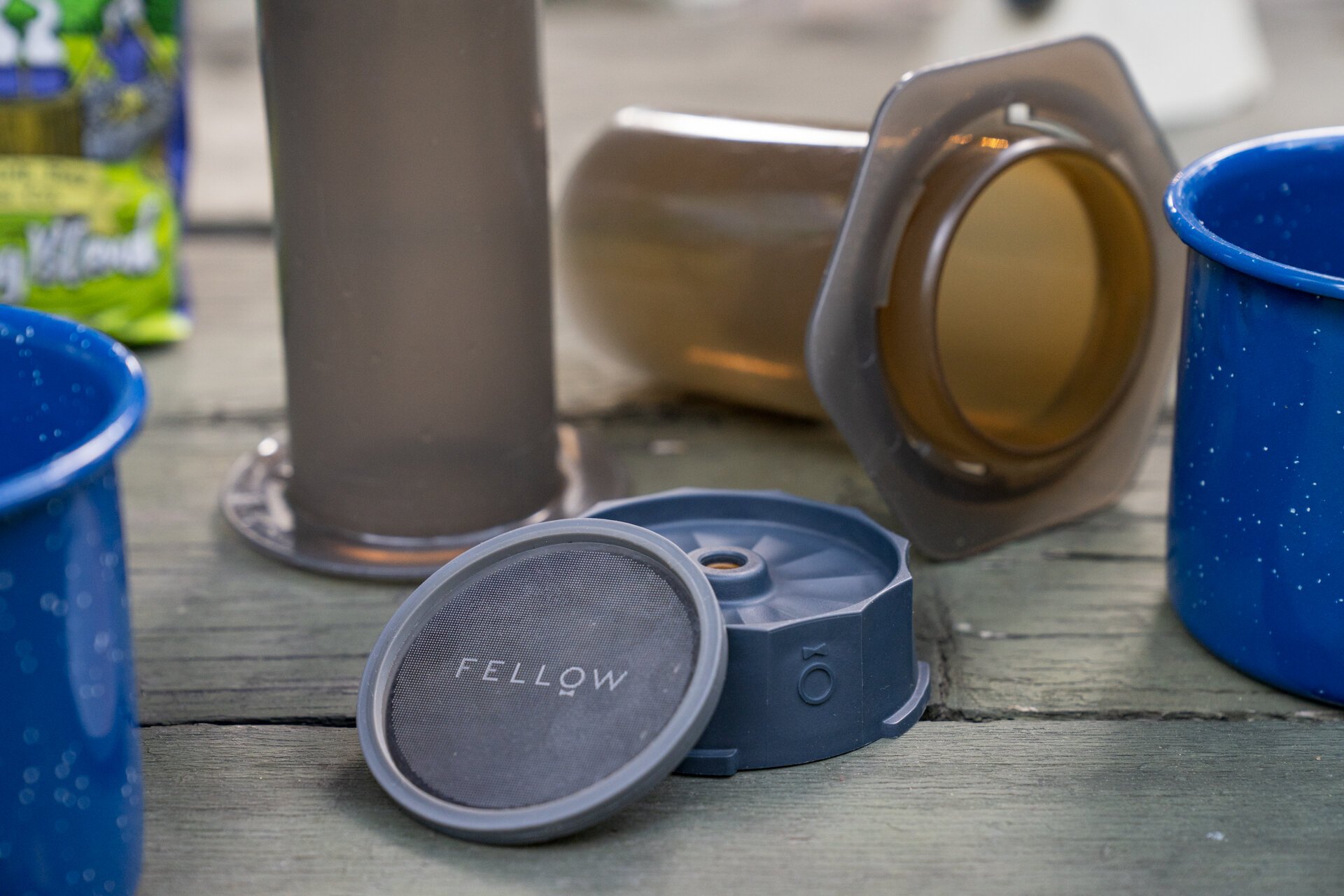
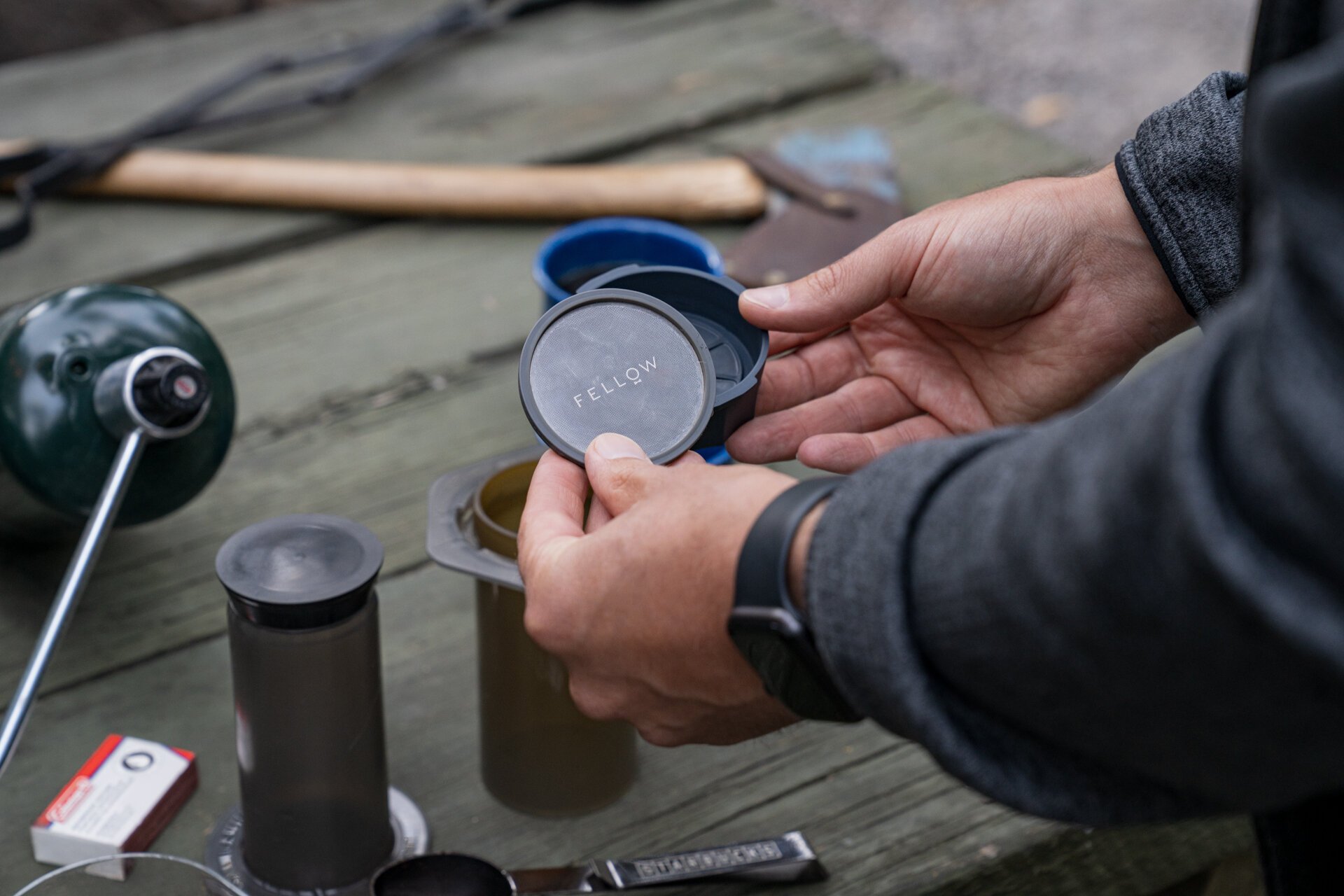

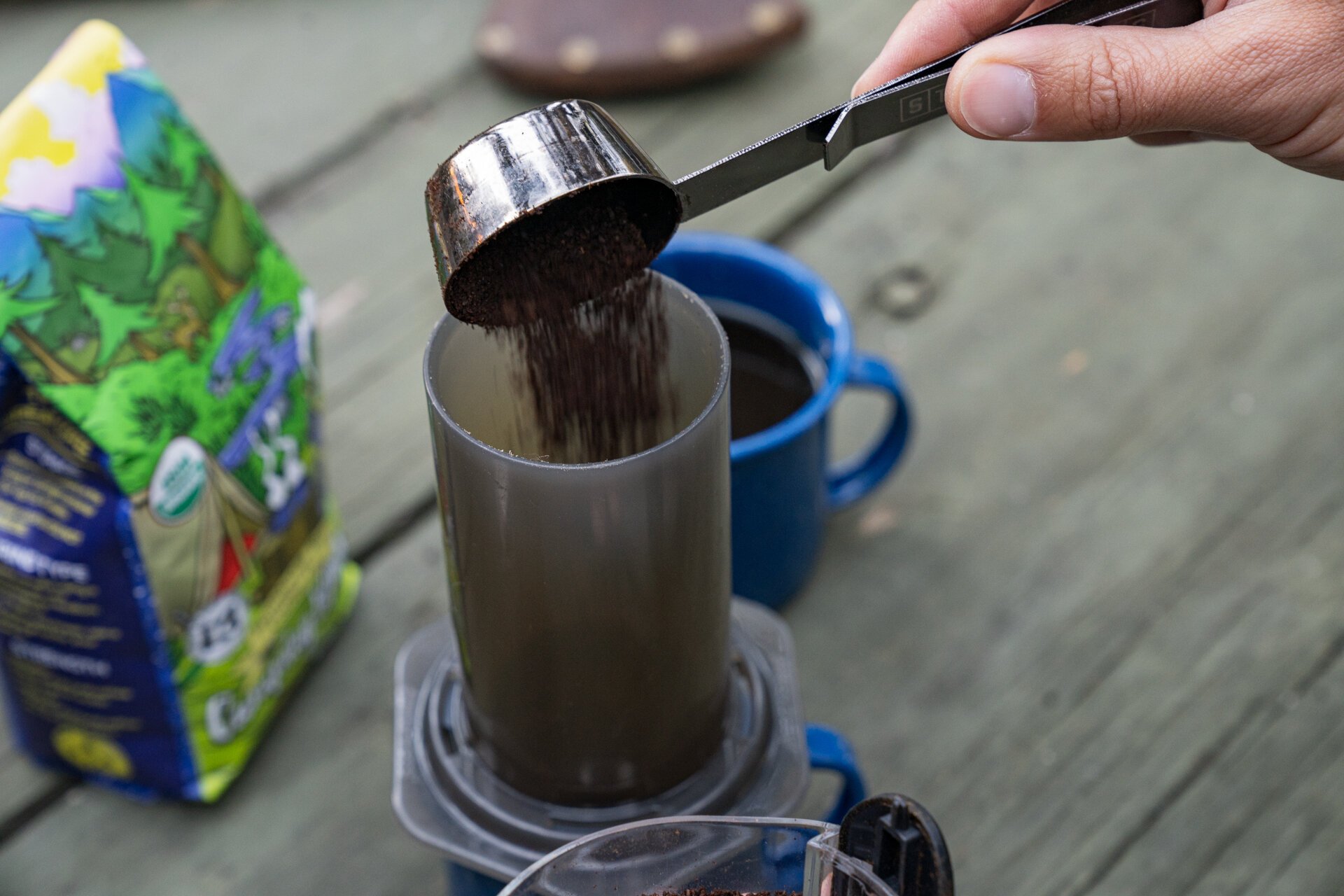

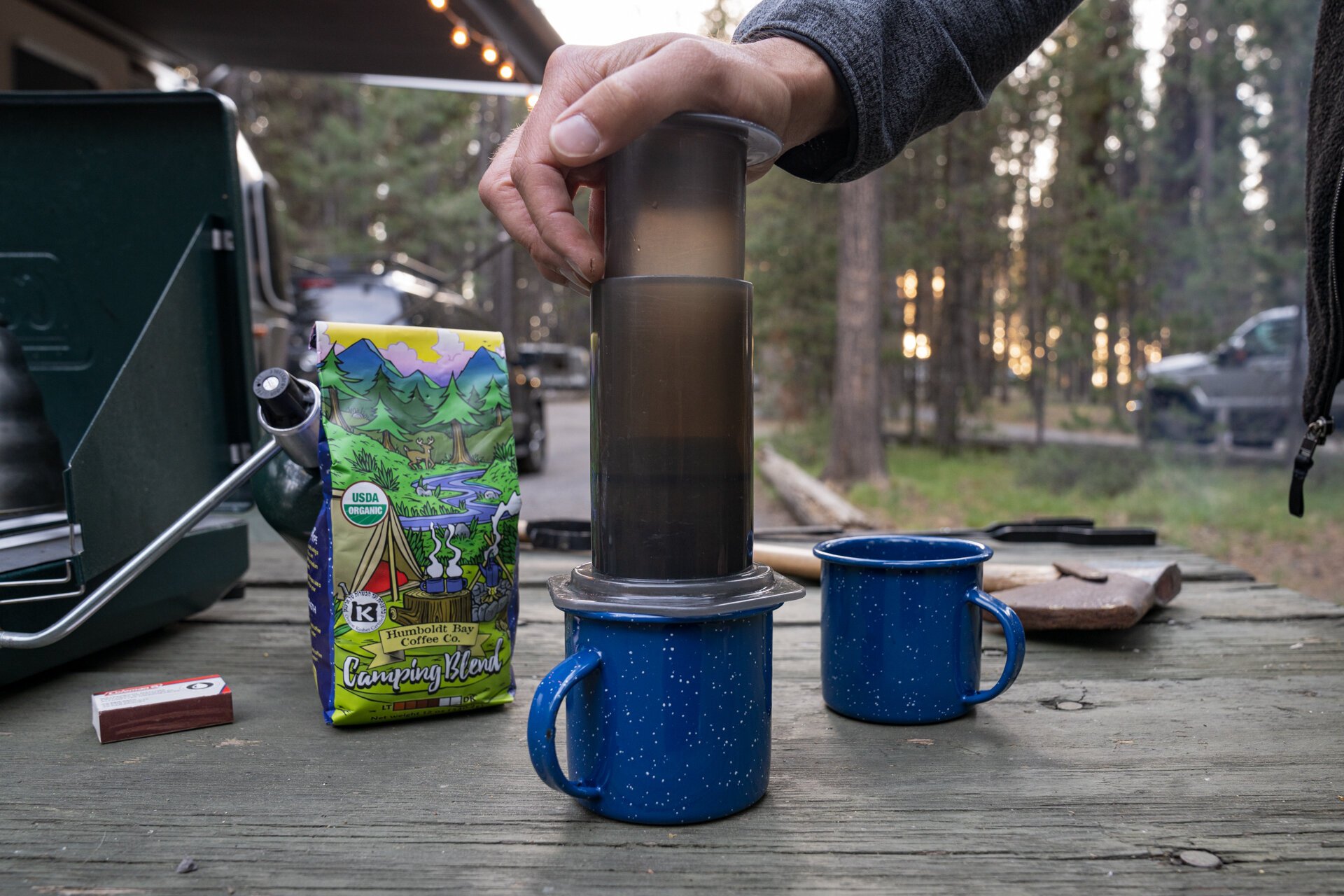
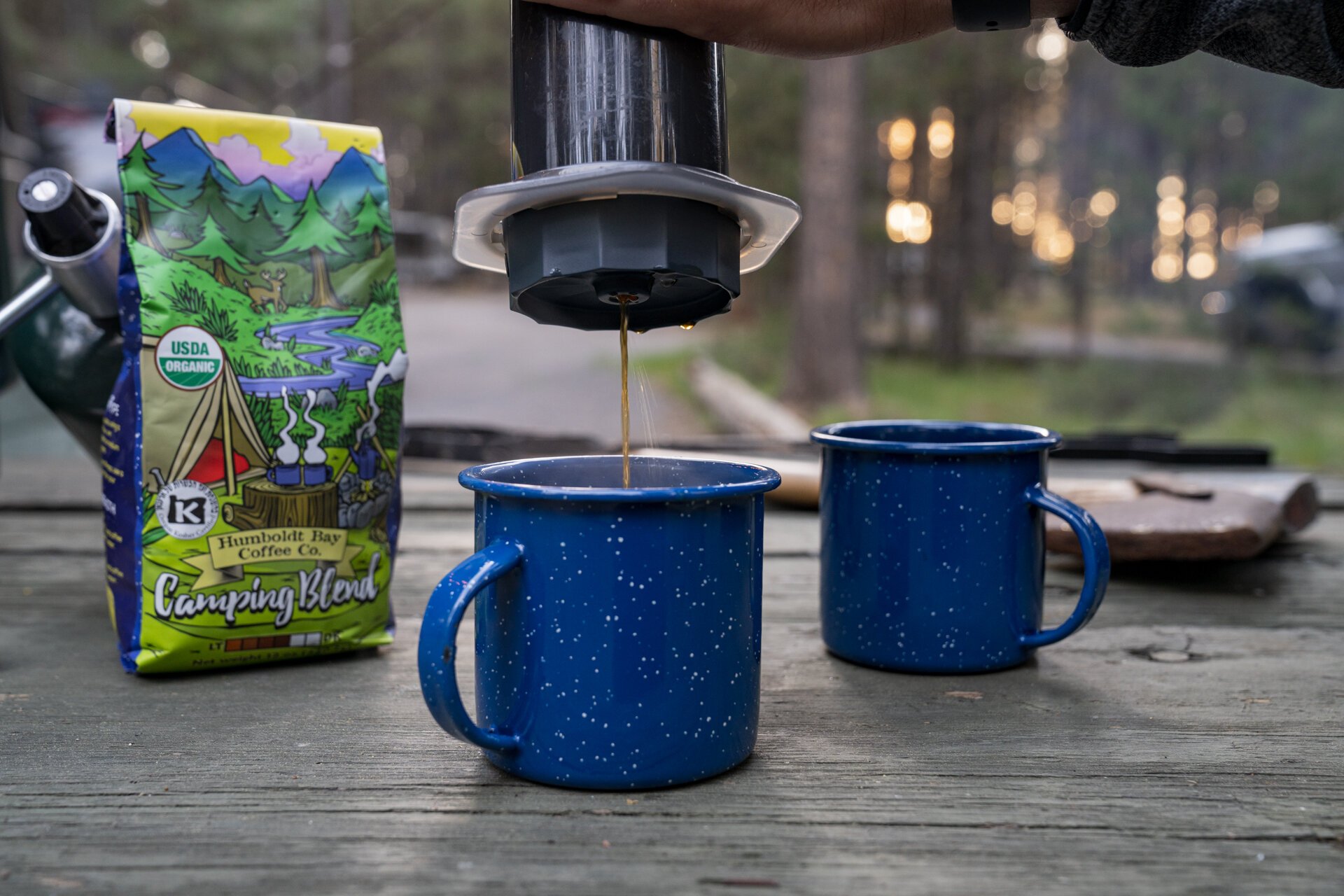
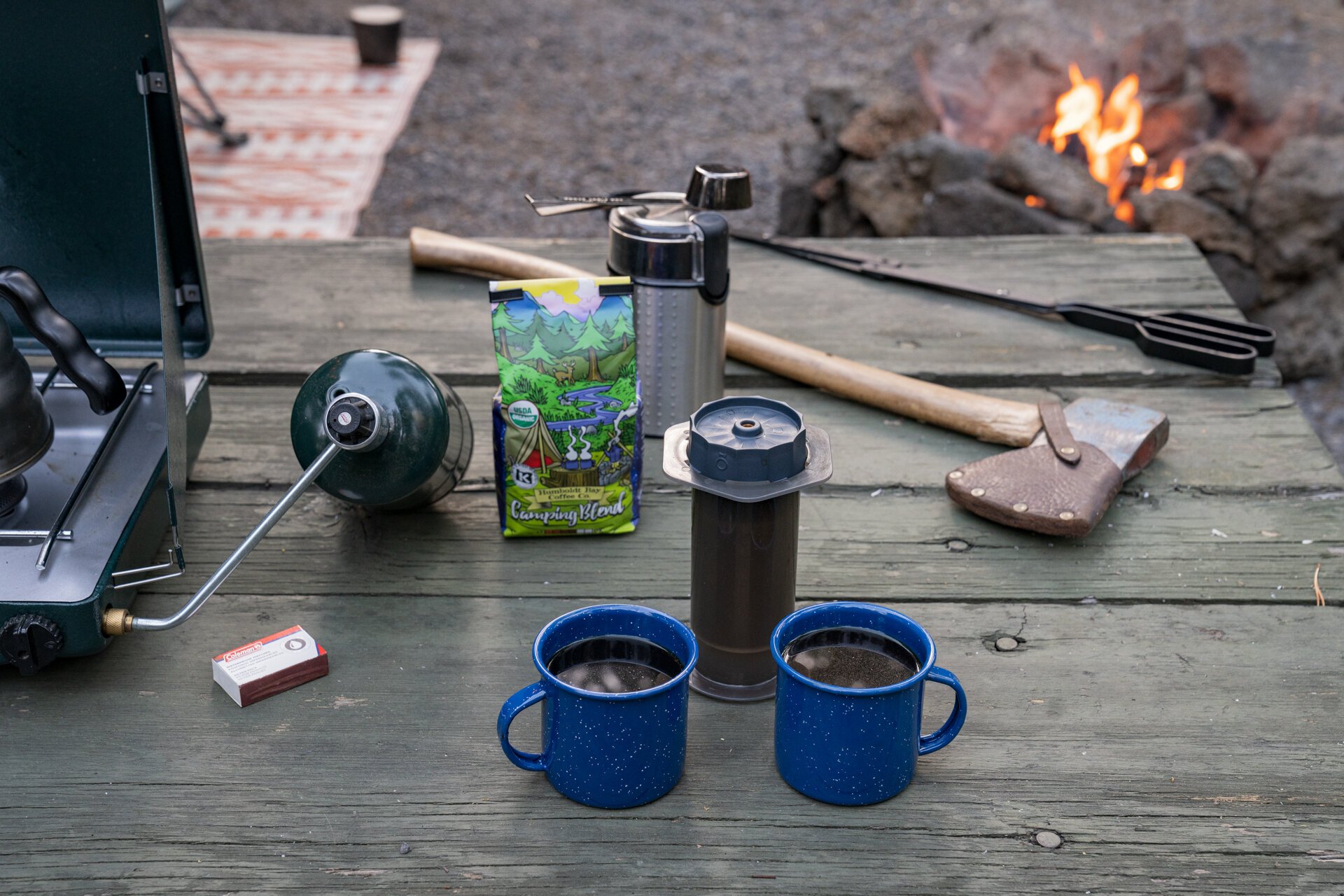
If Aeropress coffee is your preferred method, then you should take it to the next level and add the Prismo attachment made by the self-described coffee-nerds at Fellow Products. Their attachment allows for a build-up of pressure to get that "pull a shot" espresso-style smoothness through a pressure-actuated valve.
Best yet, it comes with a reusable Fellow-branded filter, so no need to pack any paper filters.
BREW METHOD: Pour-Over
LOCATION 01: Oceanside RV Resort & Campground (Coos Bay, OR)
LOCATION 02: Saratoga Escape Lodges & RV Resort (Greenfield Center, NY)
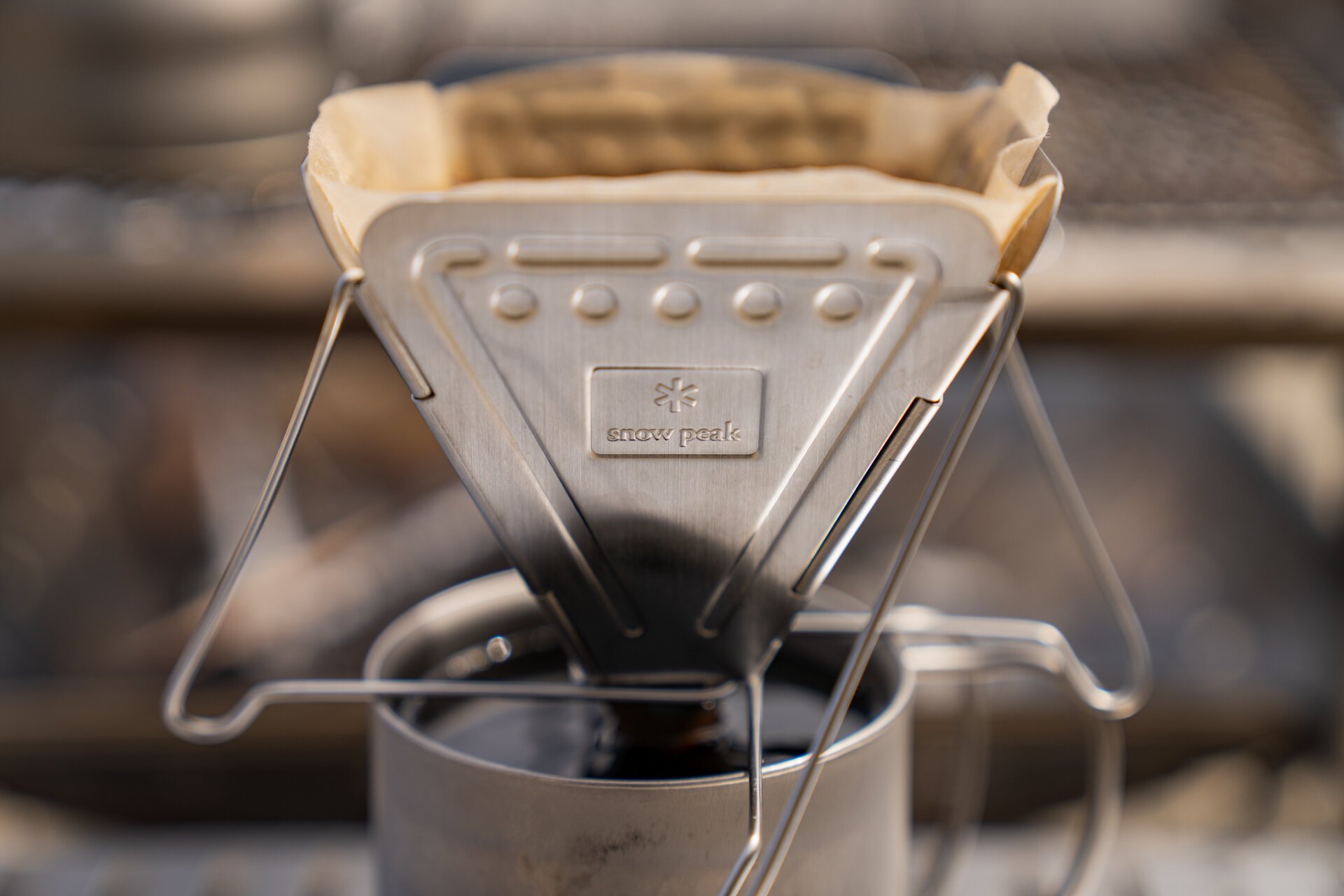
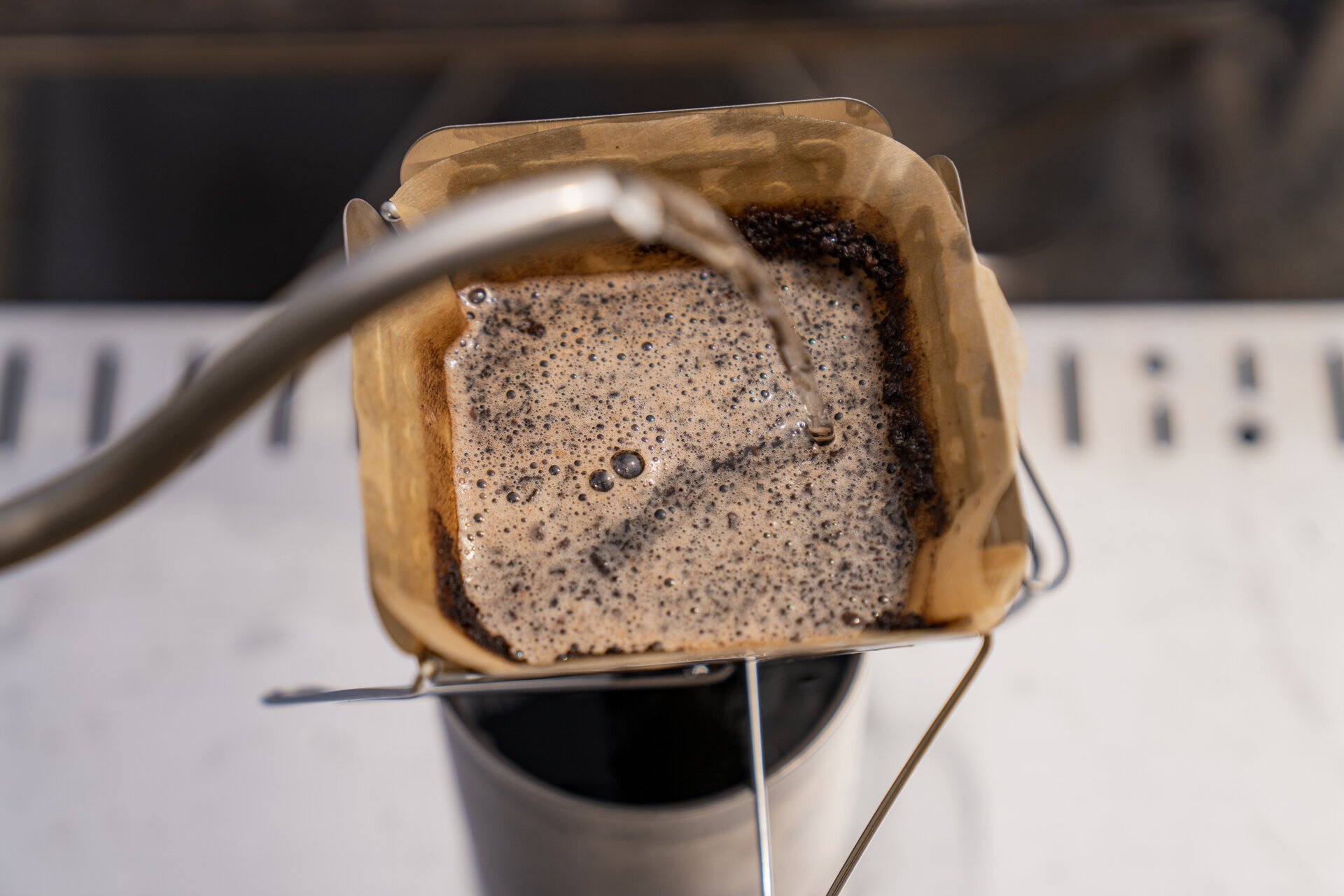
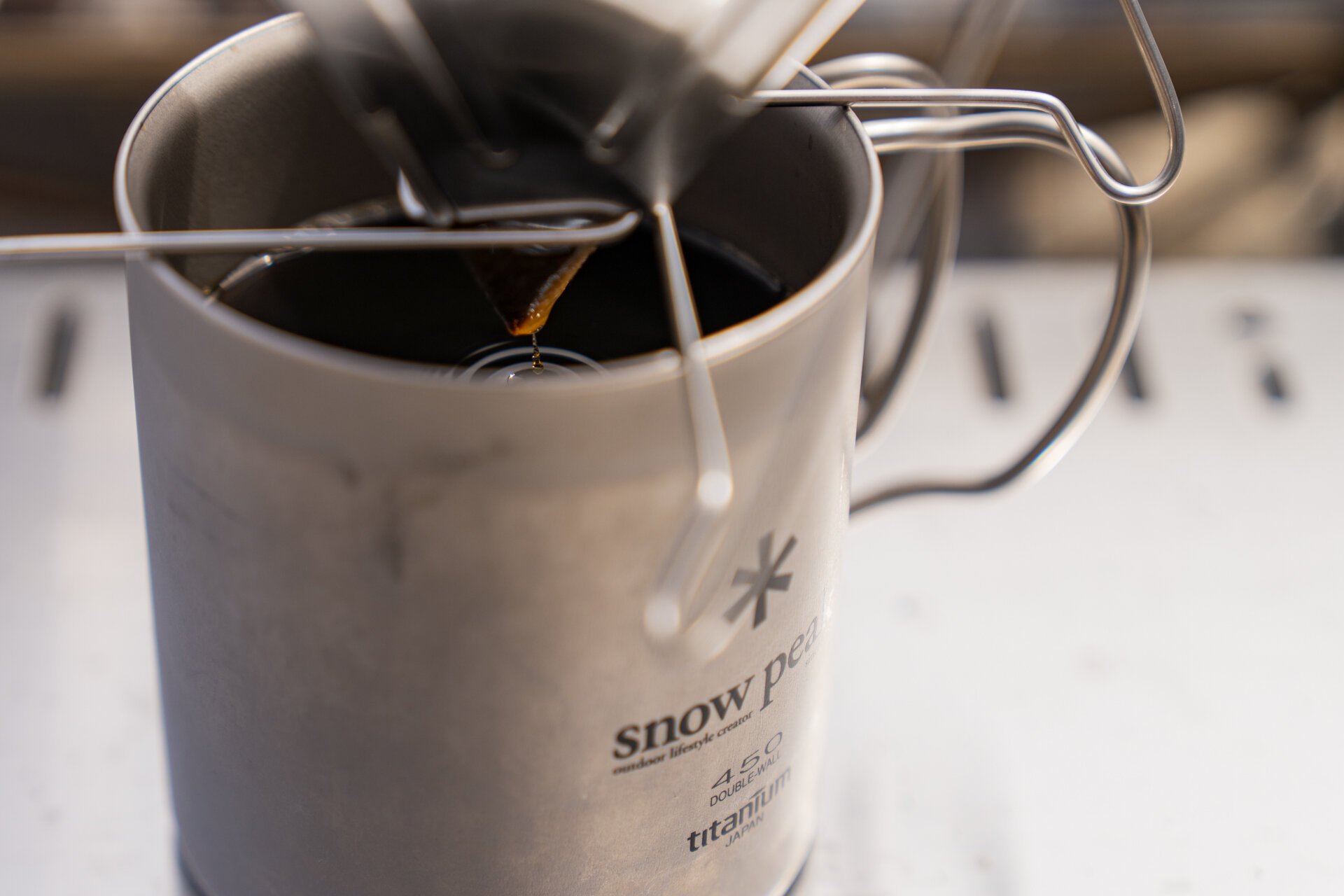
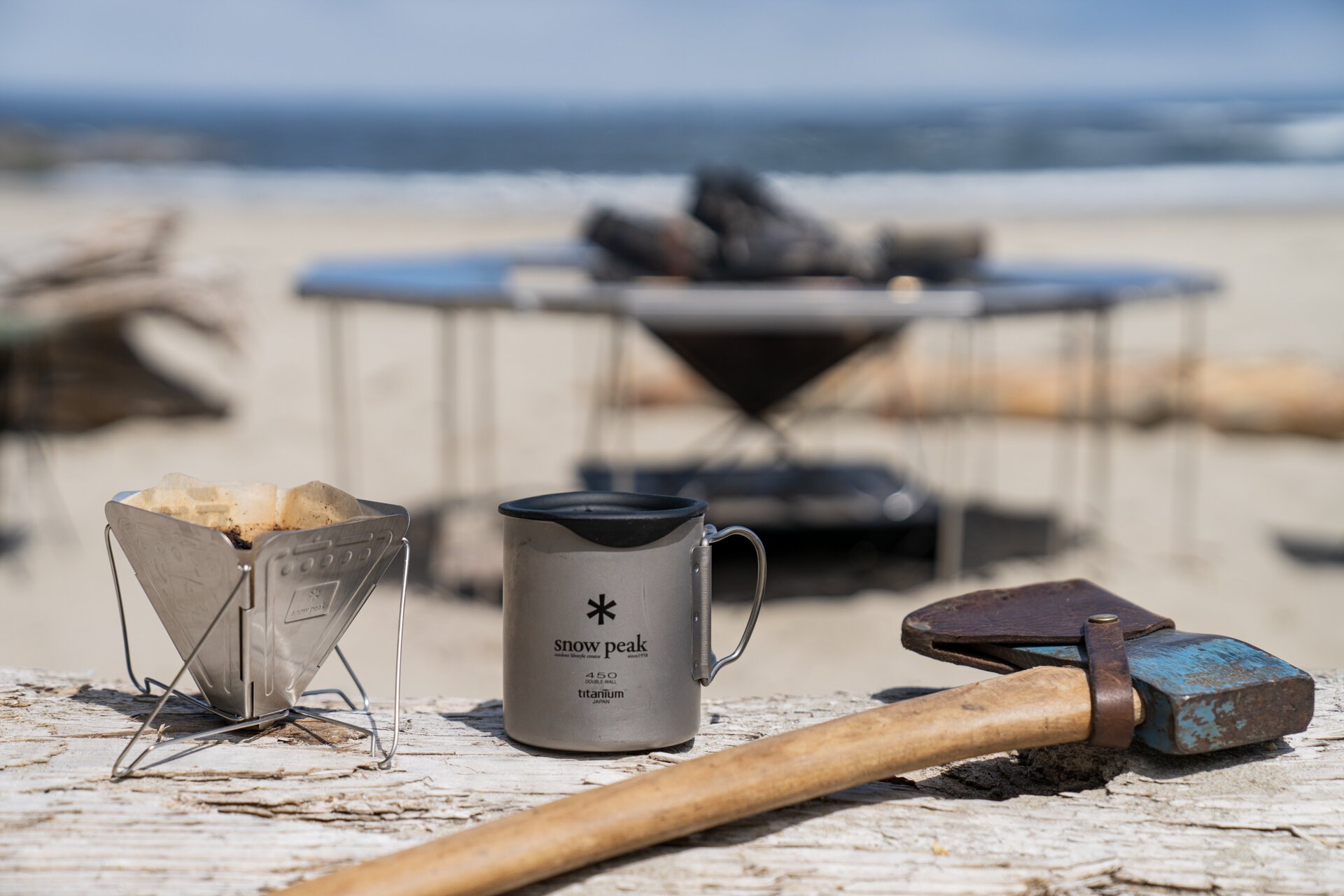
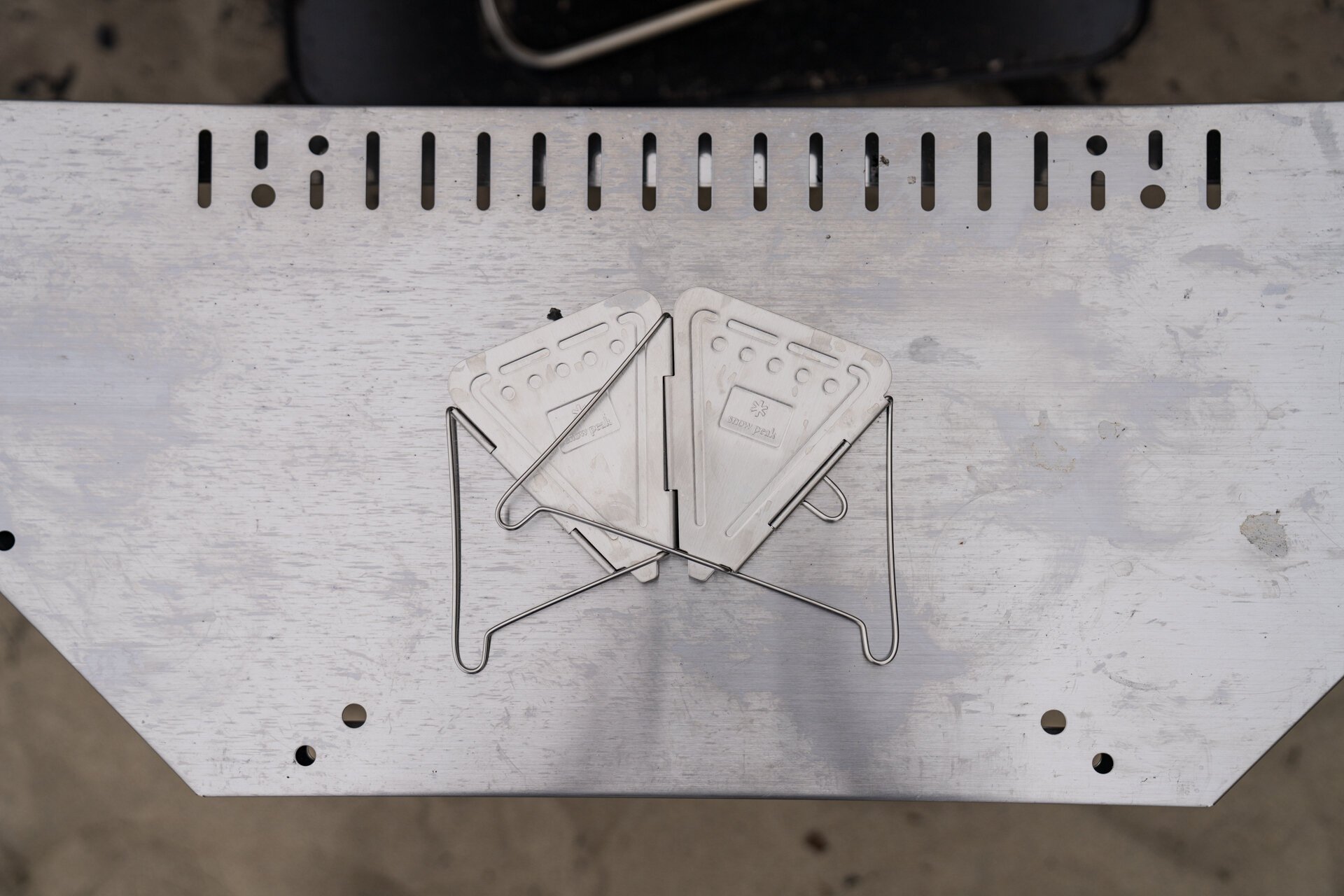
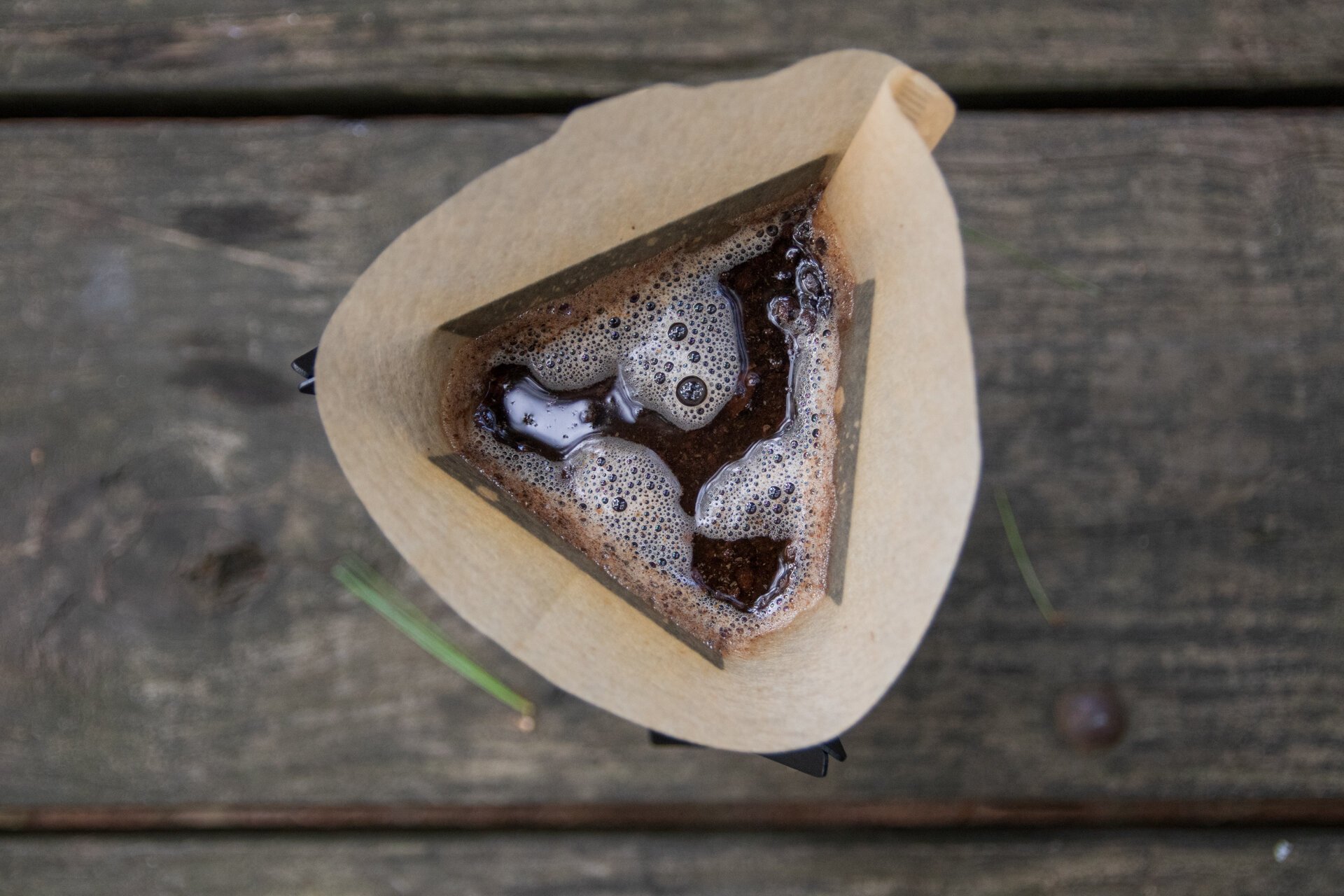
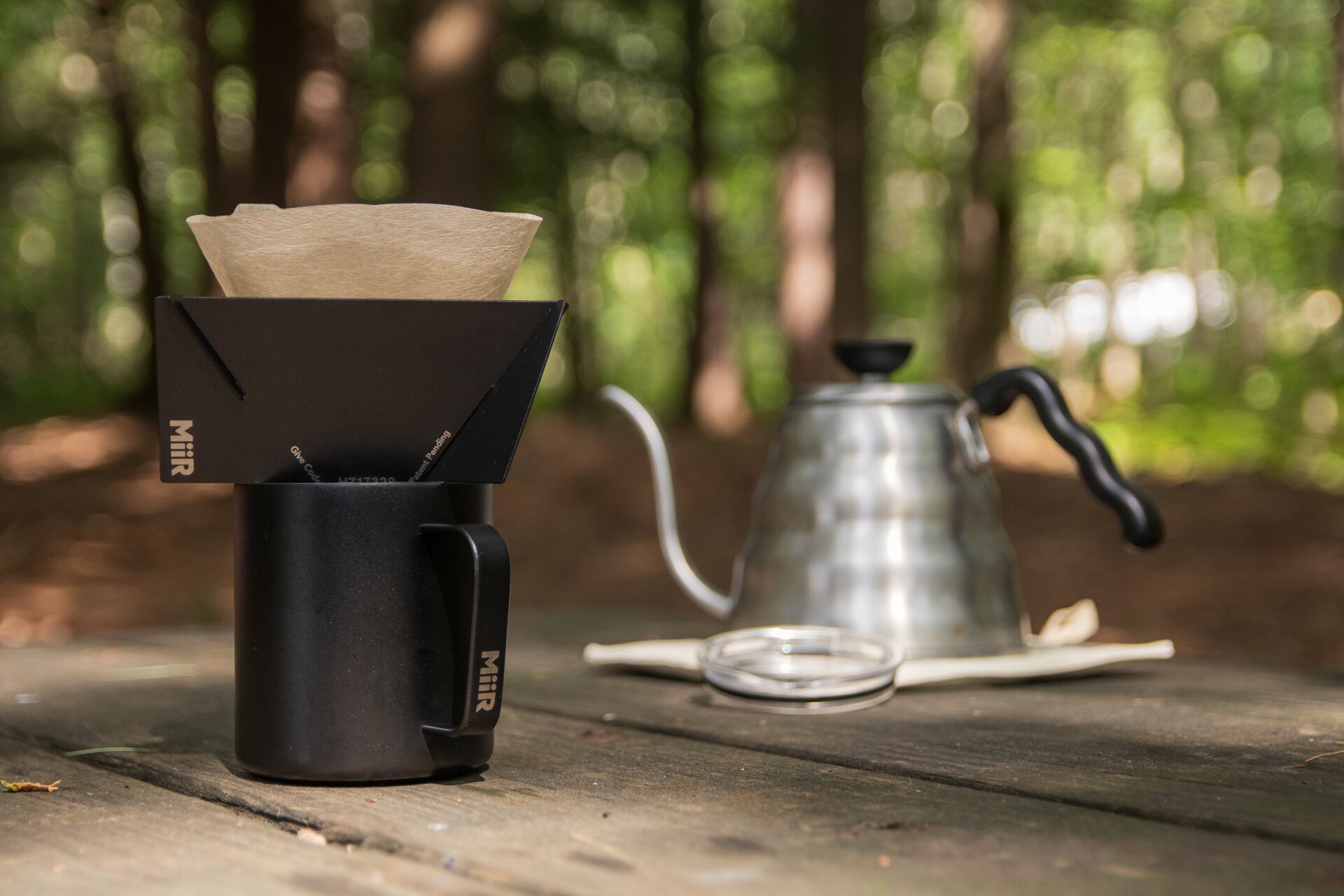

After several months of using an Aeropress every day, we ended up switching to the manual pour-over method. This enabled us to brew a larger 10-12 oz. cup of coffee and has been easier to store in our Airstream than any other coffee brewing method.
There are a variety of collapsible pour-over products available in all different sizes, shapes, colors, materials, and price points. The Miir Pourigami comes apart in three pieces and easily slides away into its travel case that's roughly the size of a business cardholder. We personally gravitated towards the Snow Peak Collapsible Coffee Drip that folds flat and hangs from hooks inside a cabinet.
Both pour-over products use a standard V60 Paper Filter Cone sold in most coffee shops, but the more readily available No. 02 Size Filters could be used in a pinch.
PROS:
Makes a clean, rich cup of coffee
Provides manual control of brewing process
Collapsible, transportable, and durable
Widely available by outdoor numerous brands
Easy to clean and use
CONS:
Makes one cup at a time
Requires V60 paper filters
NOTE: If you prefer the manual pour-over method but wish to brew 6-8 cups at once, a Chemex might be a good option. However, their size and fragility make them a bit more difficult to have around the campsite.
BREW METHOD: French Press
LOCATION: Dark Sky RV Campground (Kanab, UT)
The French press is arguably the most widely used coffee brewing method in the world. But, does that make it right for your next camping trip?
While a French press can easily make rich, heavy cups of coffee for 2-4 adults, you don't want to draw the short straw and be the one that has to clean it. The mess and difficulty cleaning it will deter many people from finding a spot for it in their rig, but the bold flavor and thermos-quality heat retention might tip the scales for others to pack it.
We've tried both the Stanley Classic Stay Hot and Bodum French presses and decided the storage space it required and mess of cleaning them were too much for us. But, don't let our limited experience stop you from pressing down your next cup.
PROS:
Makes multiple cups of thick, bold coffee
Insulated presses may retain heat for up to 4 hours
Limited prep work (Set it and forget it)
CONS:
Very difficult to clean
Require significant storage space
Doesn't filter out terpenes and other oils
NOTE: Although we haven't tried one ourselves, friends at Campspot rave about the Jetboil Flash Java French press kit.
BREW METHOD: Percolator
LOCATION: Screamin’ Eagle Campground (Ocean City, WA)
The percolator has been around for a very, very long time. Like, since the early 19th century. It's that old! Does that make it a timeless brewing method, or one that should have gone out with the horse and buggy?
Similar to the French press, the percolator requires coarsely ground coffee. Instead of being immersed in the bottom of the container, the beans are placed in a separate top chamber. A percolator is a closed system that heats the water from the bottom reservoir to a boil that then bubbles up and percolates over top of the grounds before sifting back down through the built-in filter.
The ability to brew with it over a campfire without the need for electricity makes it a common go-to for some who favor tried-and-true traditions over the latest and newest gadgets. But, be attentive once it starts to boil to ensure not to over-extract the flavor of the beans by letting it percolate too long, otherwise you'll have a very bitter cup on your hands.
PROS:
Makes multiple cups of robust tasting coffee
Durable and can be used directly over a campfire or stove
Fun to wait and watch for it to percolate
Keeps grounds out of your coffee better than "Cowboy Coffee"
CONS:
Can acquire a bitter taste if over-extracted for too long
Requires water to boil continually, which can burn your beans
Difficult to manage ideal water temperature and brew control
Can be difficult to clean
BREW METHOD: Nanopress
LOCATION: Ramblin' Redwoods Campground and RV Park (Crescent City, CA)
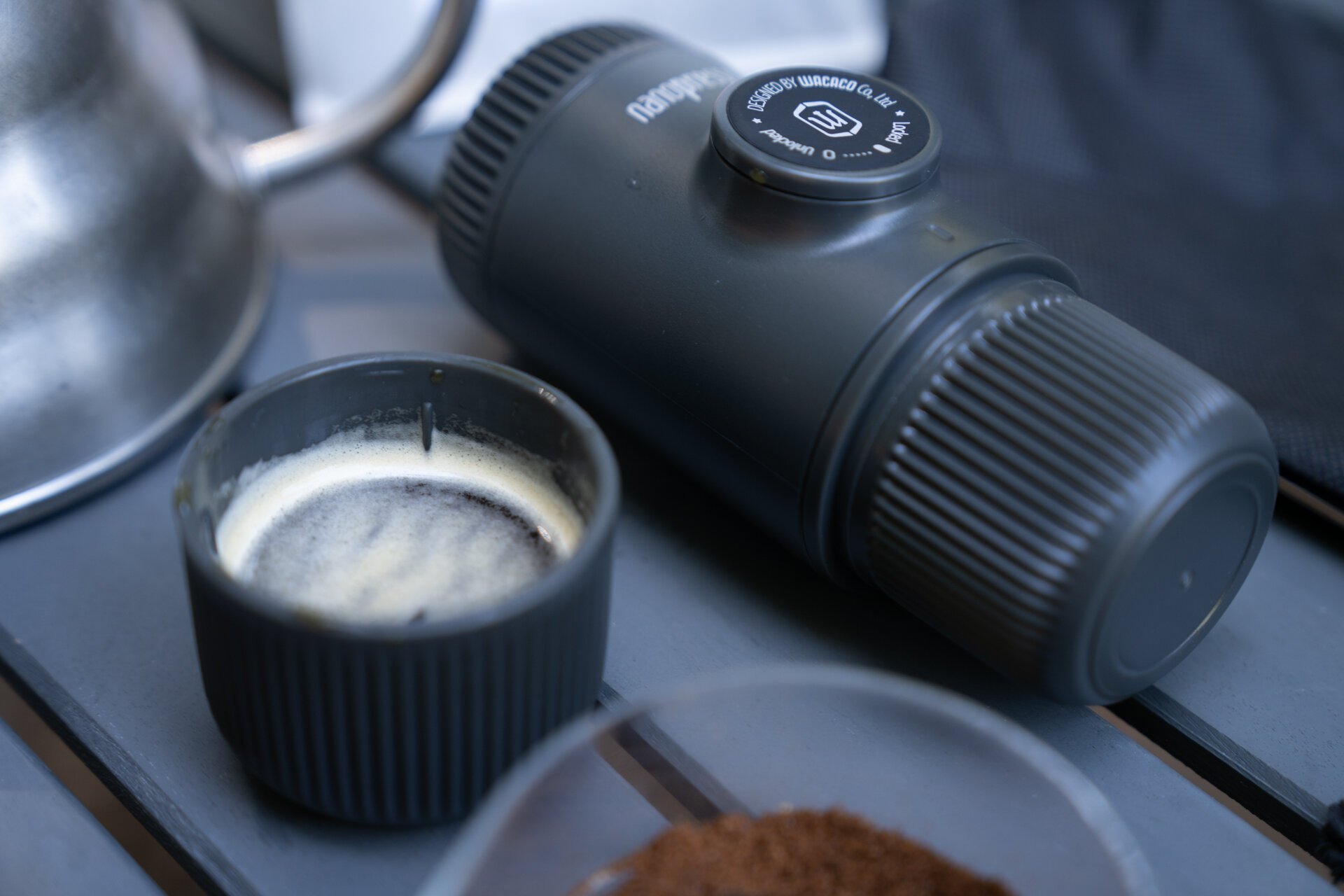
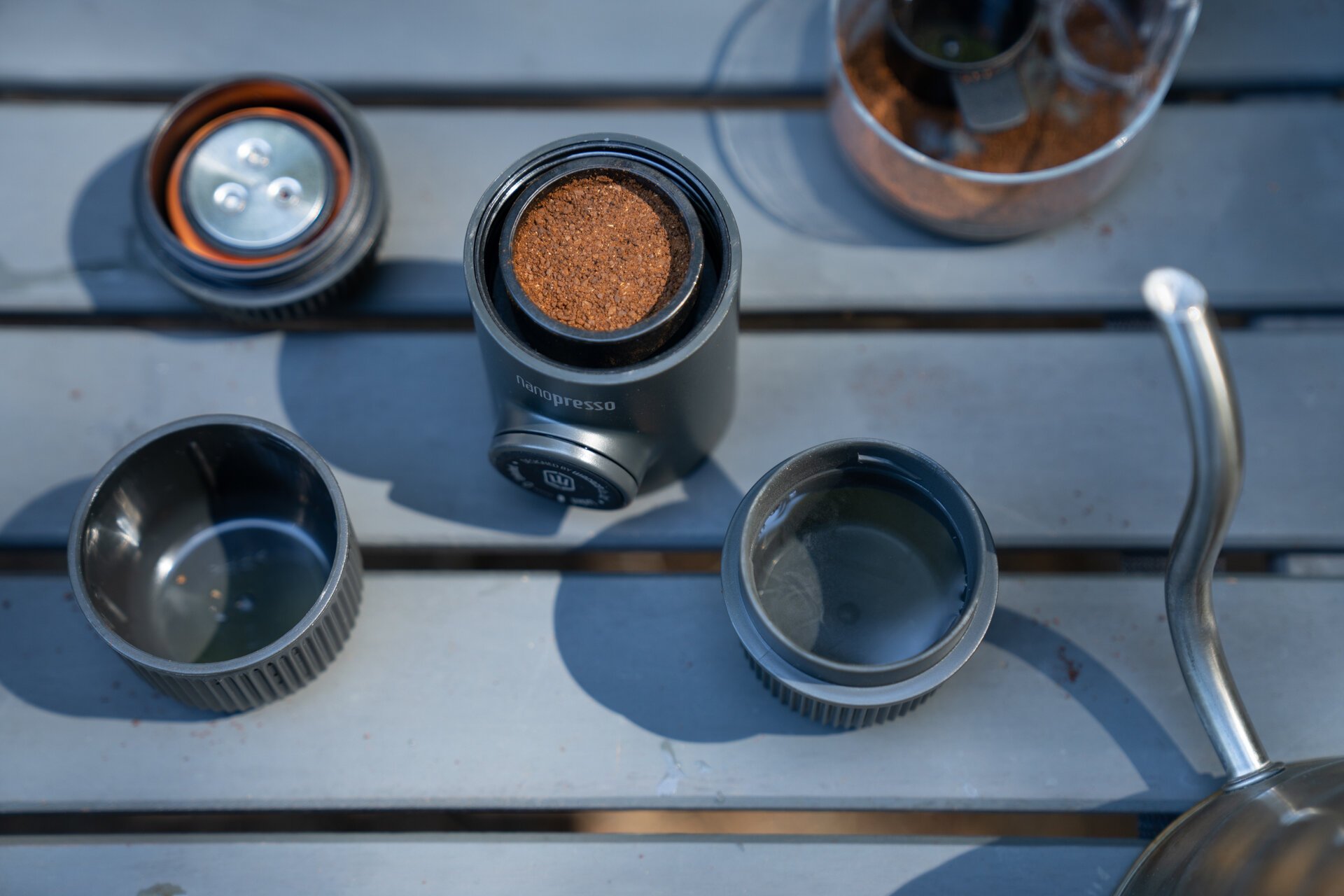
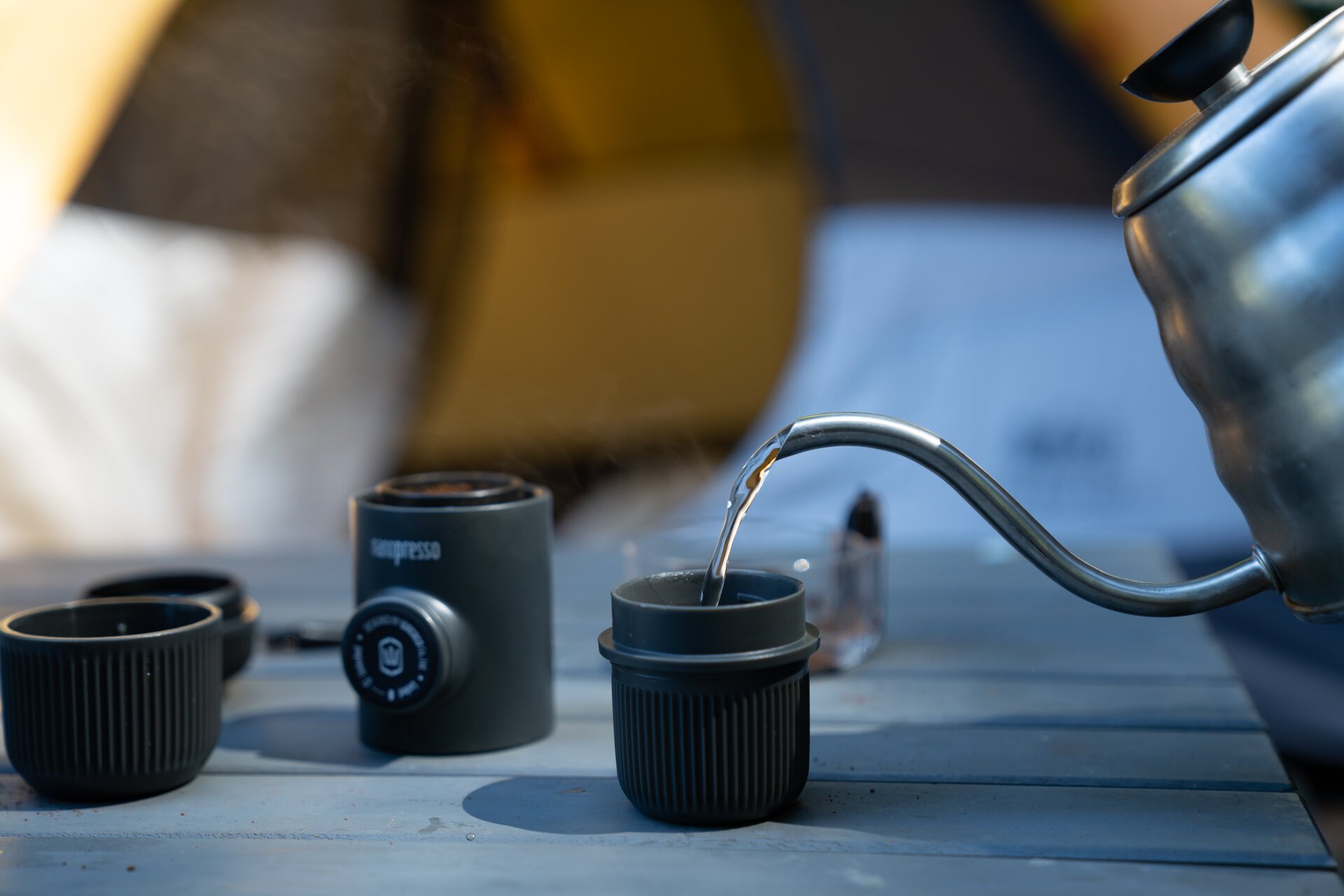
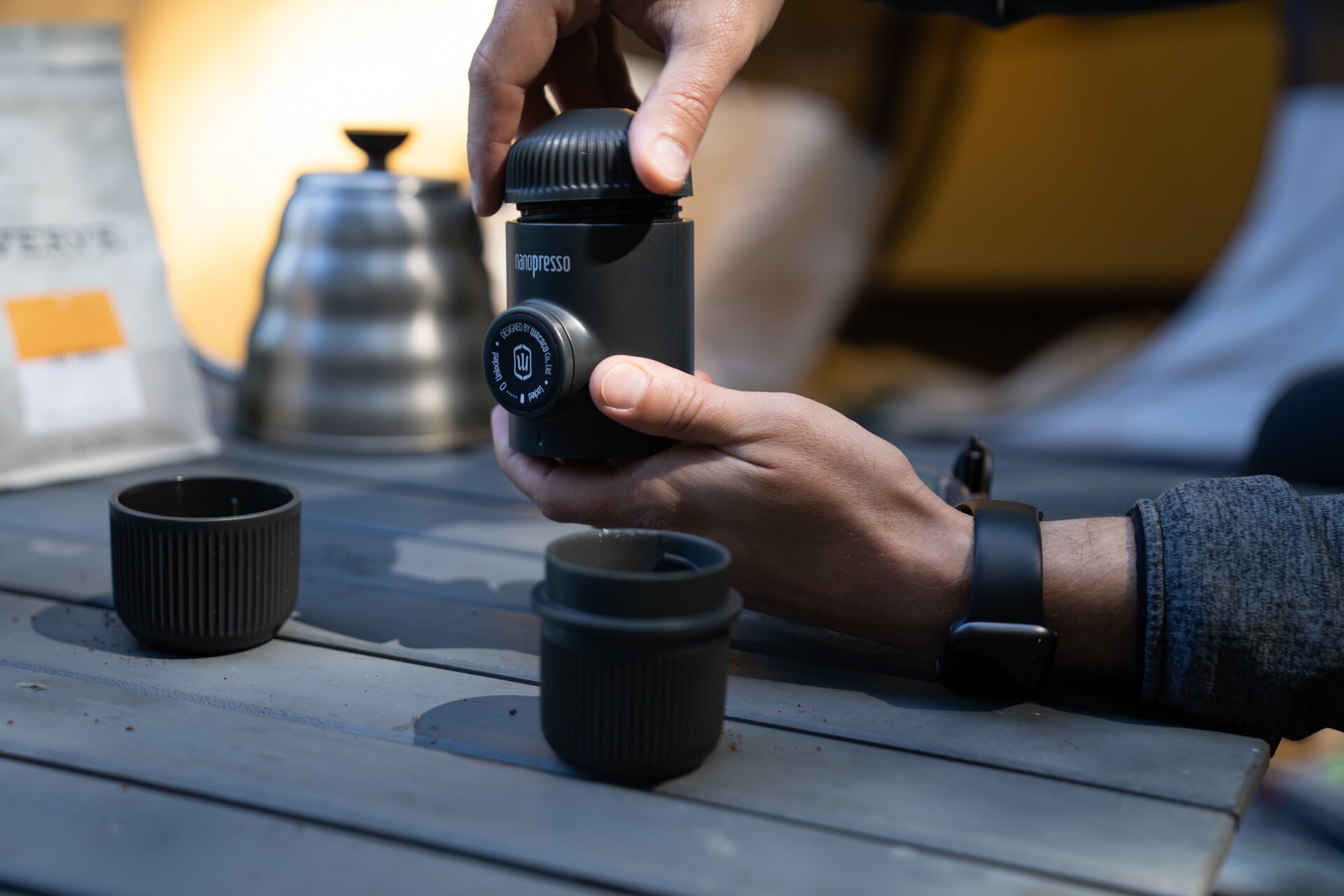

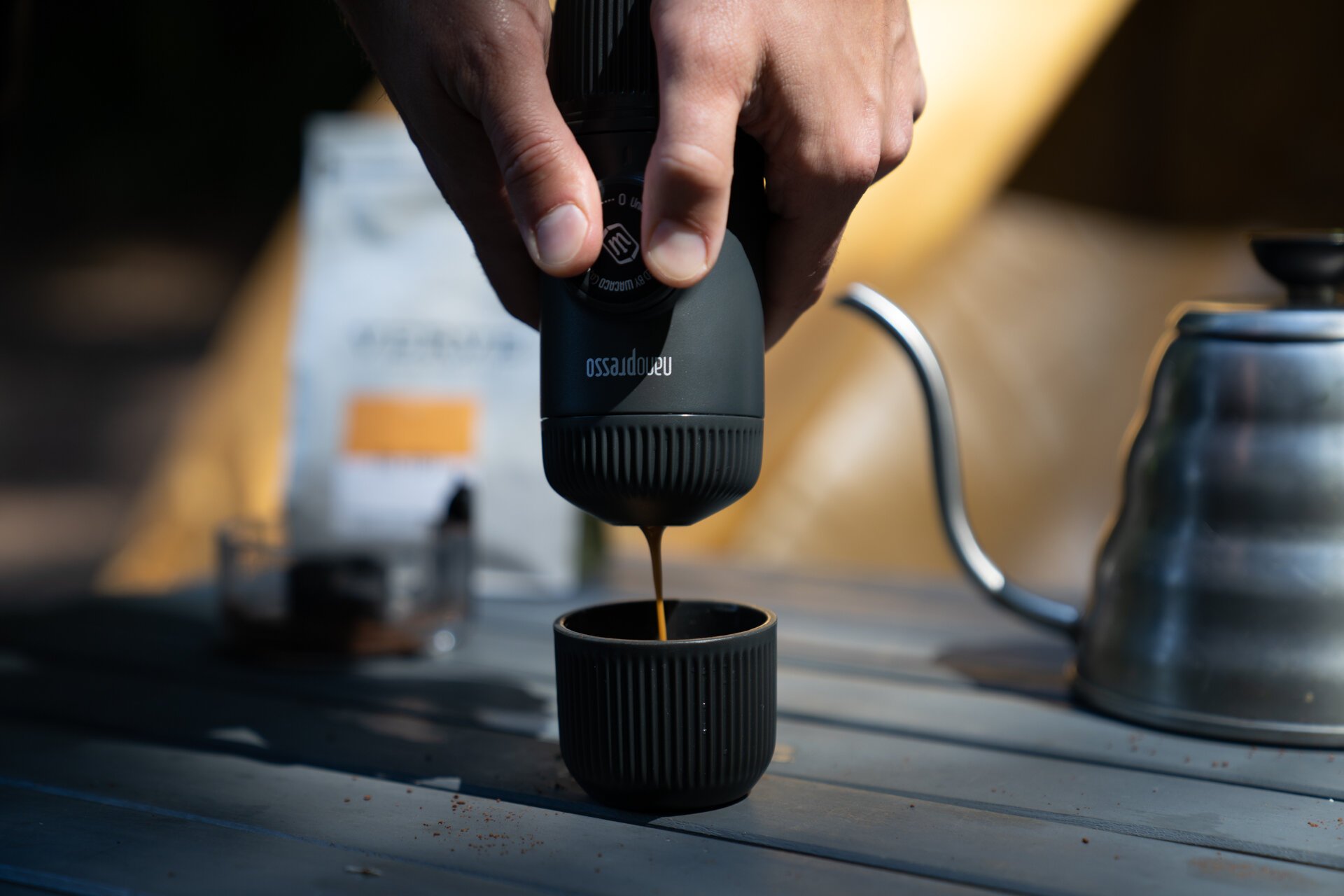
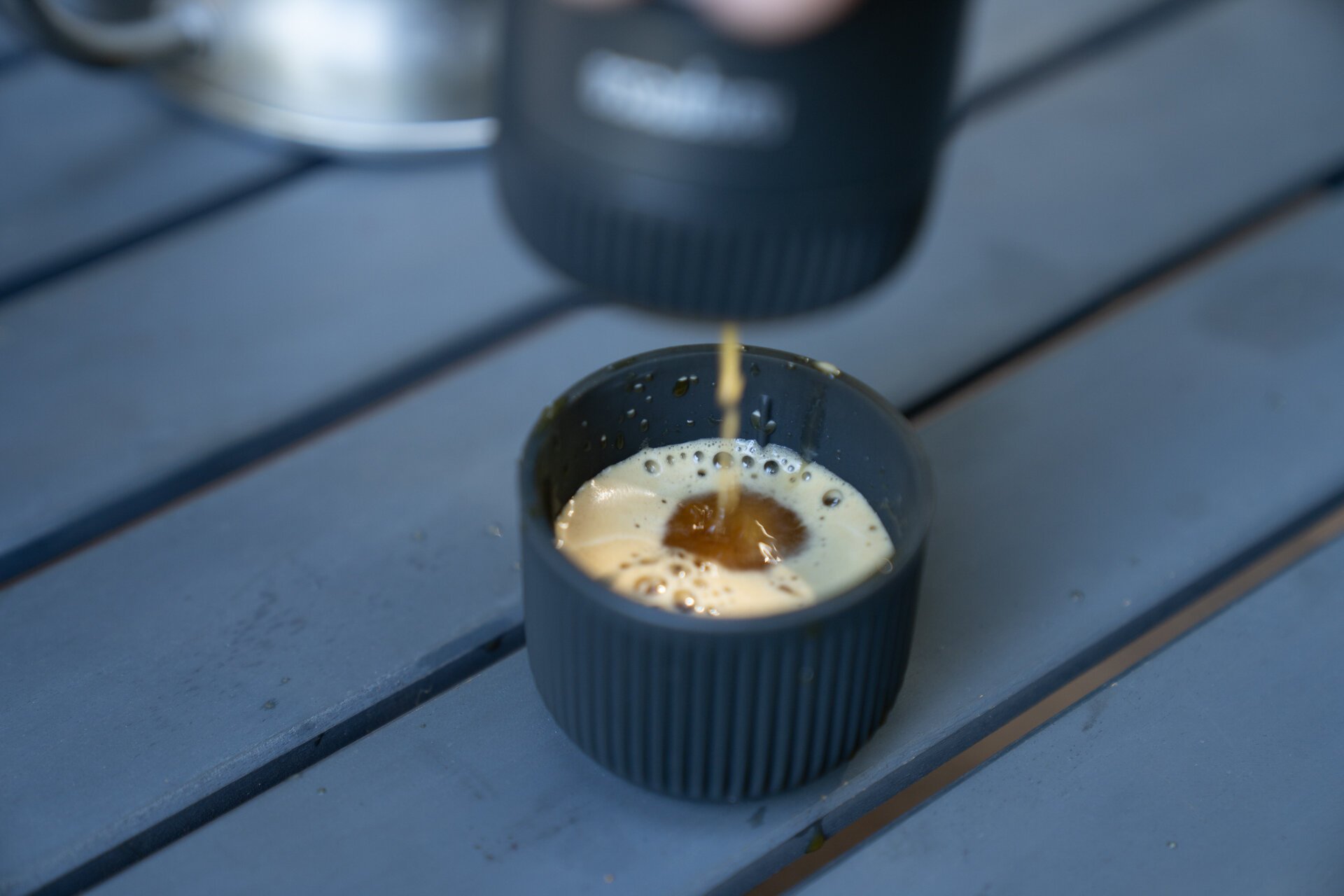
The Nanopresso by Wacaco is one of the most unique, compact, and self-contained espresso makers I've ever seen. It opens almost like a matryoshka doll set as you unpack the espresso cup, coffee scoop, built-in filter, and even a brush to clean out any finely ground coffee residue.
For your first few extractions, you'll likely find yourself closely following along the provided instructions card, but after a couple of uses, you'll quickly learn this hands-on approach for a great espresso jolt wherever you find yourself.
PROS:
Very compact and self-contained
Hand-pump action (no electricity required)
Makes a great pull of espresso
Can be used to make a latte or cappuccino
Great for a pick-me-up for your next adventure
CONS:
Makes one espresso shot at a time
Can be a very manual and detailed process
NOTE: Wacaco also makes the Cuppamoka, which is a compact and lightweight travel pour-over coffee maker system the size of an insulated to-go mug — neither the Nanopresso or Cuppamoka heat water or grind beans.
BREW METHOD: Instant Coffee
LOCATION: Sawyers Rapids RV Park (Elkton, OR)
A few years ago, instant coffee may not have been a serious recommendation, but the instant industry has made large strides thanks to companies like Swift Cup Coffee.
They've worked with specialty coffee roasters to master the art of a delicious cup of coffee no matter where you are, whether that's at your campsite, out on the trail, or fly fishing in the middle of a stream.
PROS:
Just add hot water
Variety of coffee roasted by specialty coffee partners
Everyone can try their own roast or blend (including decaf options)
Quick and easy to make
Perfect for single-cup drinkers
Biodegradable packaging
CONS:
Only found in select specialty coffee shops
Have to order online to be shipped
Slight sweetness flavor from instant coffee crystals
NOTE: Another bonus of Swift Coffee is its versatility. Sprinkle it on anything you'd like to have a subtle, rich powdering of coffee. We even added it to our S'more Sundae concoction.
BREW METHOD: Steeped Coffee
LOCATION: Santa Cruz Redwoods RV Resort (Felton, CA)
Just like the rise of instant coffee over the past few years, single-use coffee has also risen to the top of the coffee industry and Steeped Coffee has been the one leading the way.
That's right: steeped. Just like your favorite tea, except with specialty coffee in a single-serve bag. Plus, they made it fully compostable. That's what we call a win-win.
Steeped Coffee has worked with specialty coffee roasters to master the art of a delicious cup of coffee no matter where you are, whether that's on the road, climbing a mountainside, or forest bathing deep in the Olympic Peninsula.
PROS:
Just add hot water
Variety of coffee roasted by specialty coffee partners
Quick and easy to make
Fully compostable packaging
Everyone can try their own roast variety (including decaf options)
CONS:
Only found in select specialty coffee shops
Requires some patience for a stronger flavor steep
May have to order online to be shipped
Coffee may cool down while steeping if not using an insulated mug
PRO TIP: Steep bags in a mason jar in the fridge overnight to enjoy iced coffee to go the next day.
BREW METHOD: Single-Serve Pour-Over
LOCATION: Ride Out Ranch (Florence, AZ)
It's not quite instant coffee and you don't steep it either. Instead, it's a single-serve bag of pour-over coffee that fits in your pocket by Kuju Coffee. Once you tear open the packet, the paper filter unfolds like a pop-up book to enable you to easily anchor it to your cup and pour your hot water over the prepackaged grounds. Simple as that.
PROS:
Just add hot water
Quick and easy to make
Variety of roasts and blends available
Available in major outdoor shops and select grocery stores
CONS:
Single-use packaging
May have to order online to be shipped
BREW METHOD: Keurig
LOCATION: Peaceful Woodlands Family Campground (Blakeslee, PA)
It wasn't that long ago when Keurig took the coffee drinking world by storm. Their k-cups made single-cup coffee more convenient than ever. But, at a steep cost for both the environment and to those who prefer a stronger cup of joe.
PROS:
Can use your own coffee with a Reusable K-Cup Filter
Quick and easy to make a single cup at a time
PROS:
Makes a limited-strength cup of coffee
K-cups are single-use plastics
Take up counter and storage space
Require electricity
One cup of coffee at a time
BREW METHOD: Drip Machine
LOCATION: Ride Out Ranch (Florence, AZ)
While the classic drip coffee machine isn't the first thing you'd think of when you consider camp coffee, but yet you'll likely see at least a couple being used at most campgrounds with larger groups or couples who seriously need them some coffee.
PROS:
Can make 8-12 cups of coffee
Most drip machines have hot plates to keep the carafe warm
Some models can be auto-programmed to brew at a specific time
PROS:
Takes up counter and storage space
Not very durable
Requires electricity


